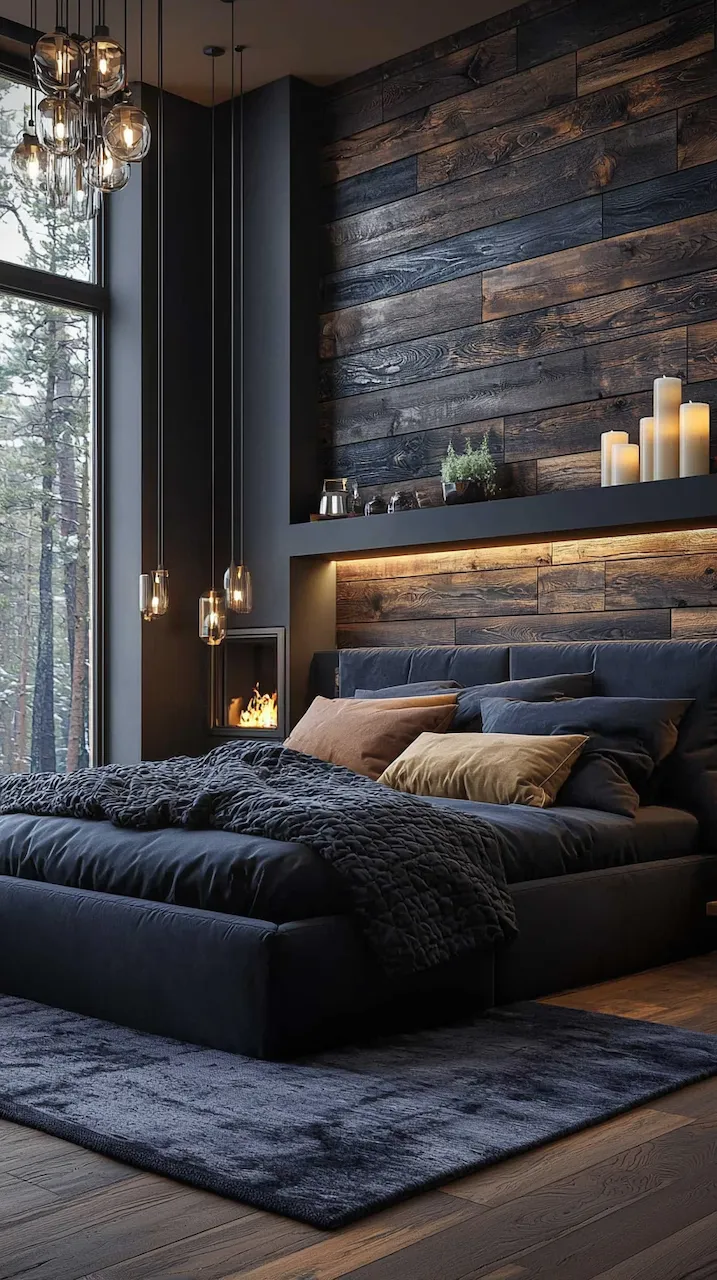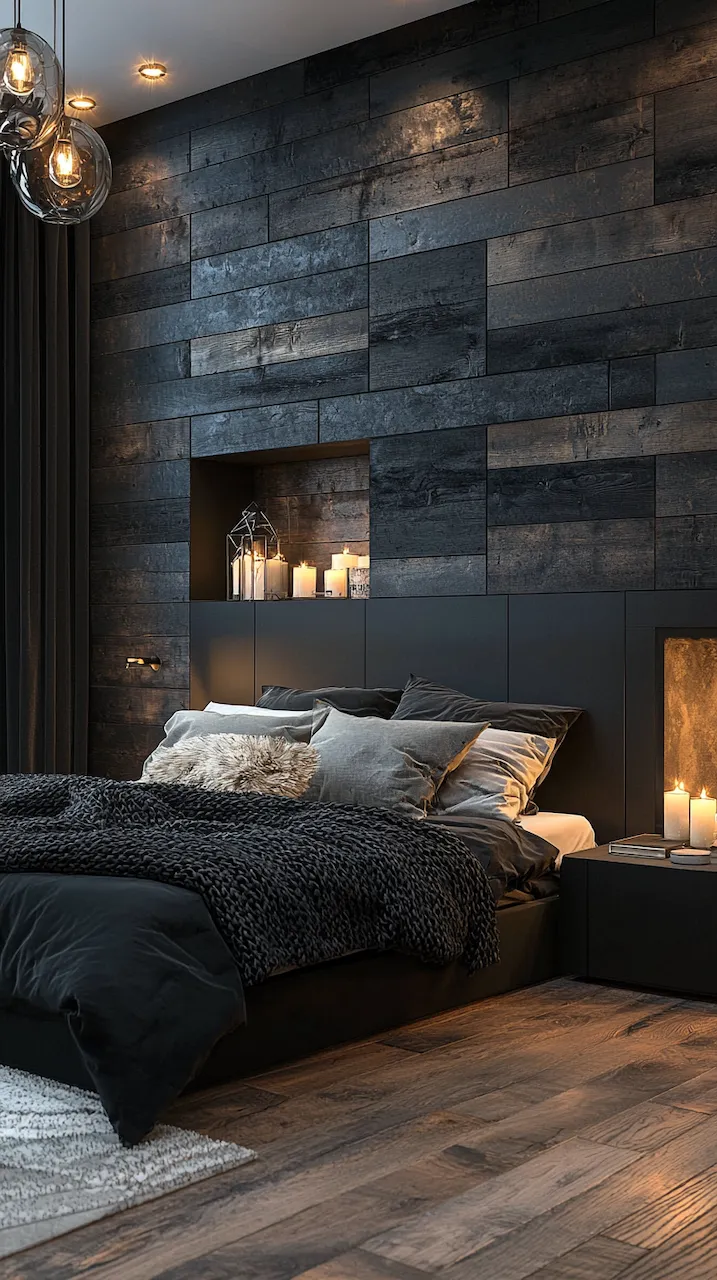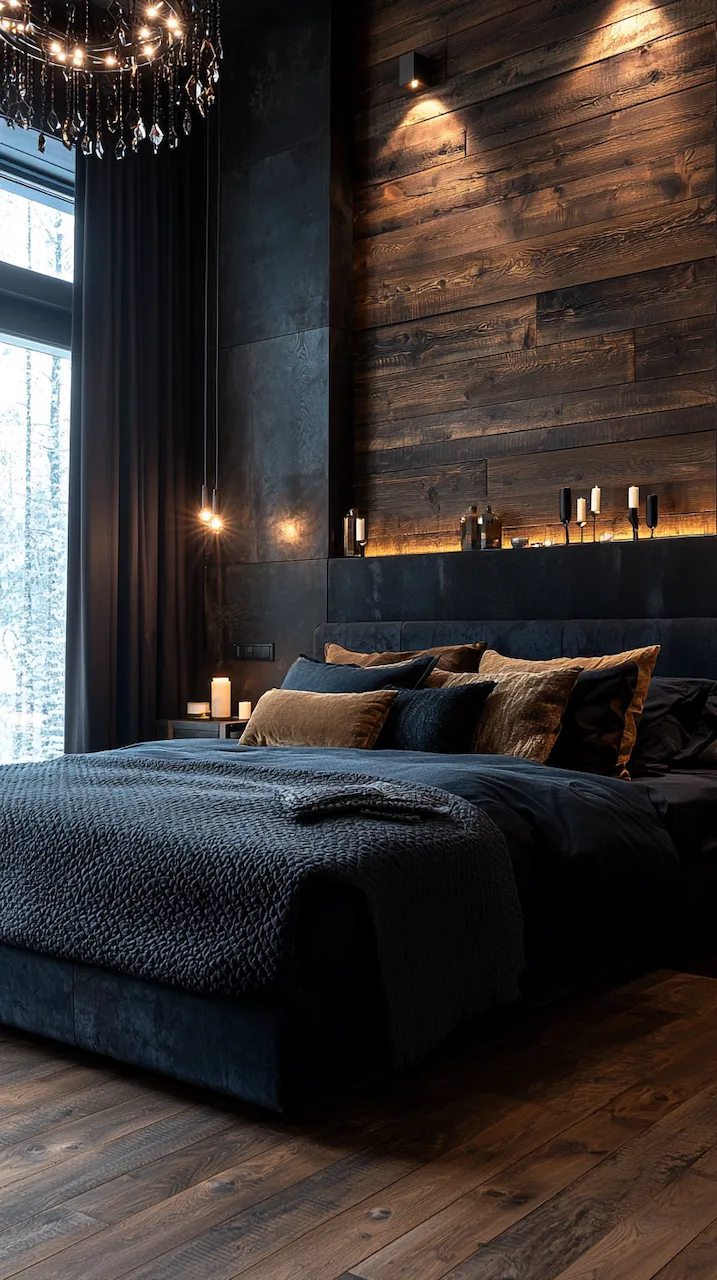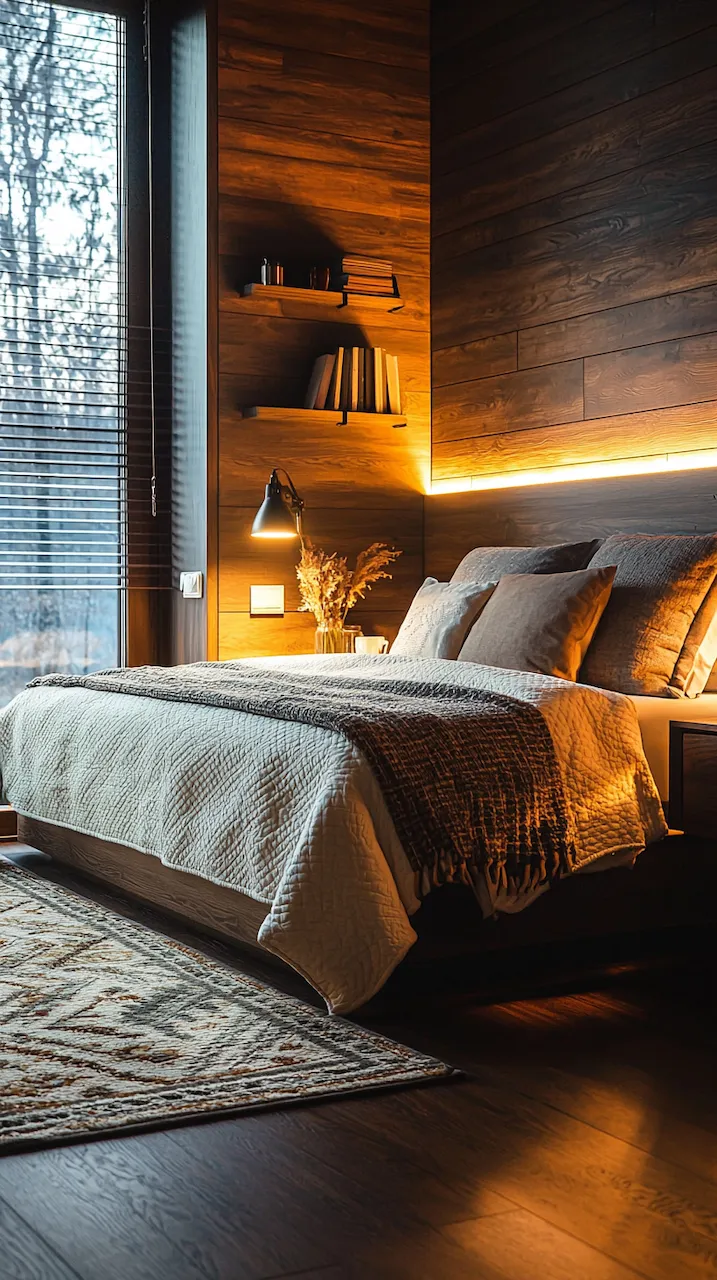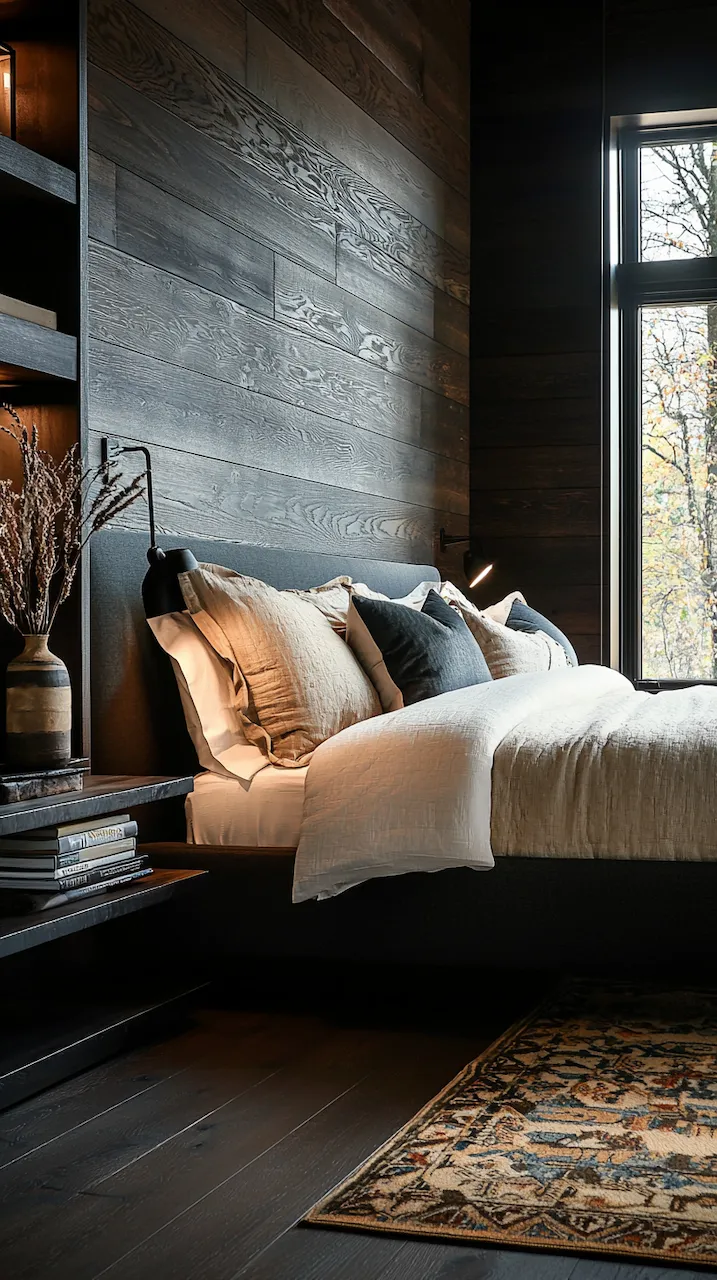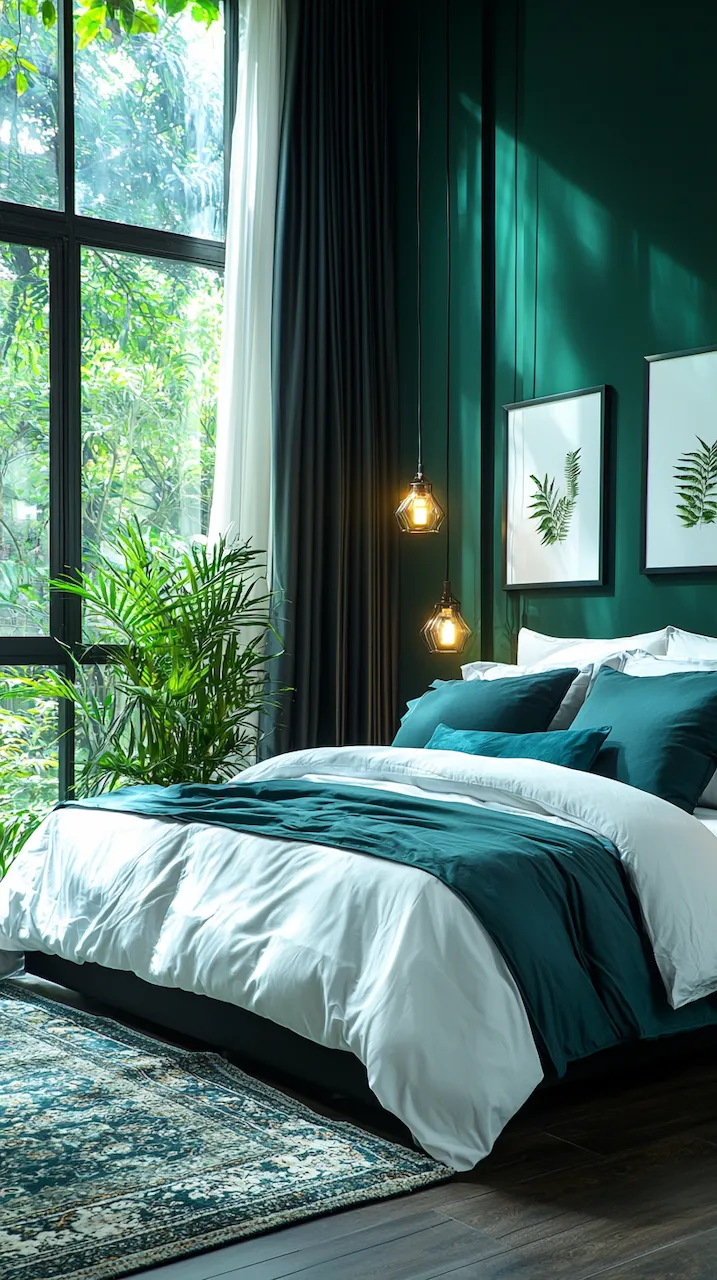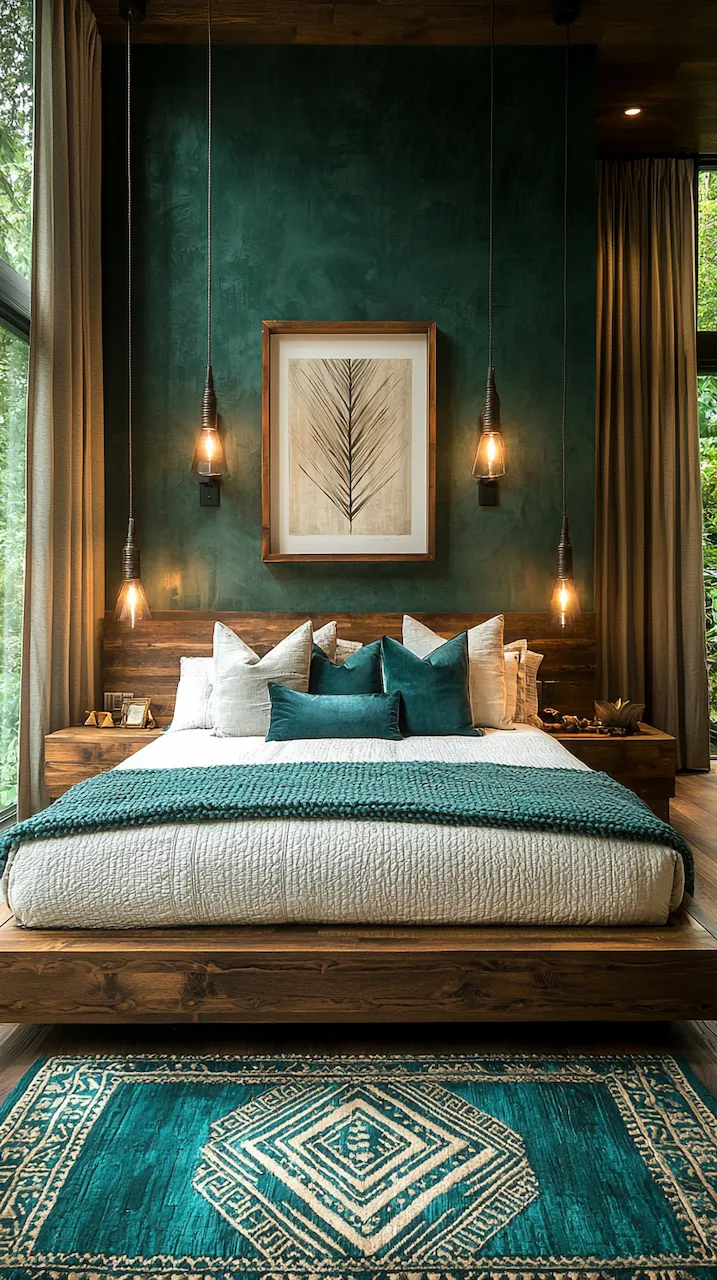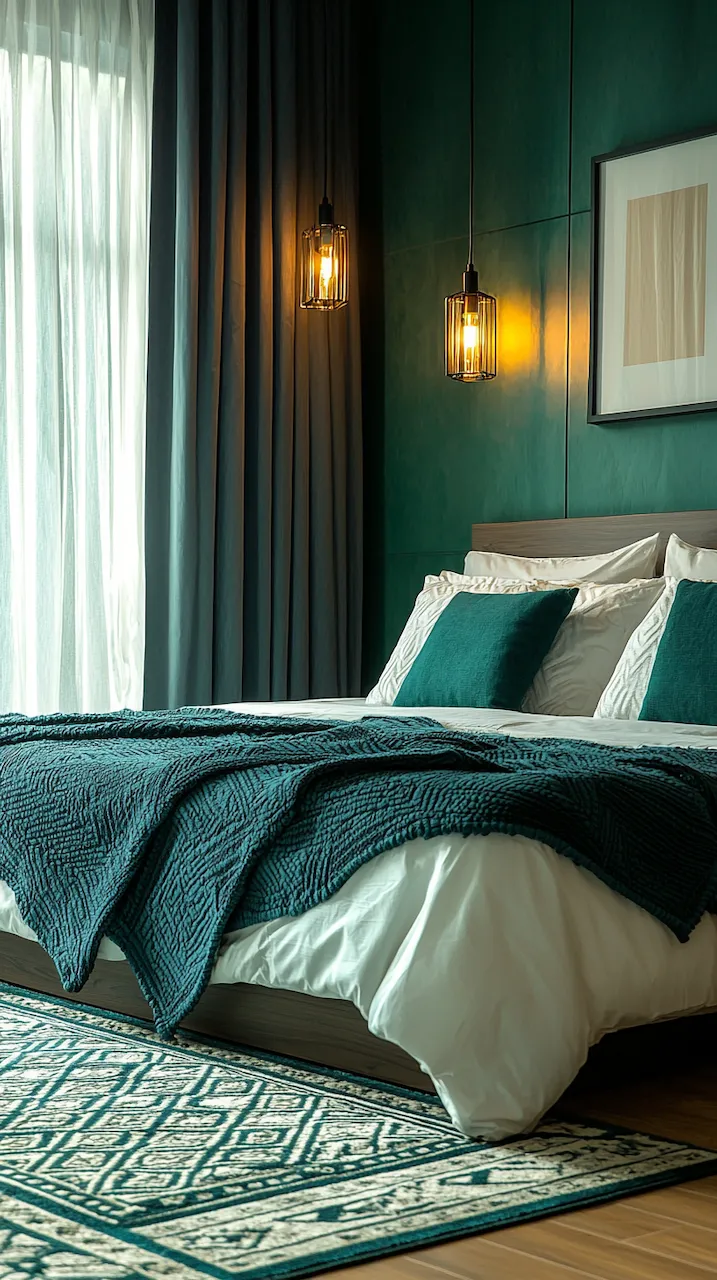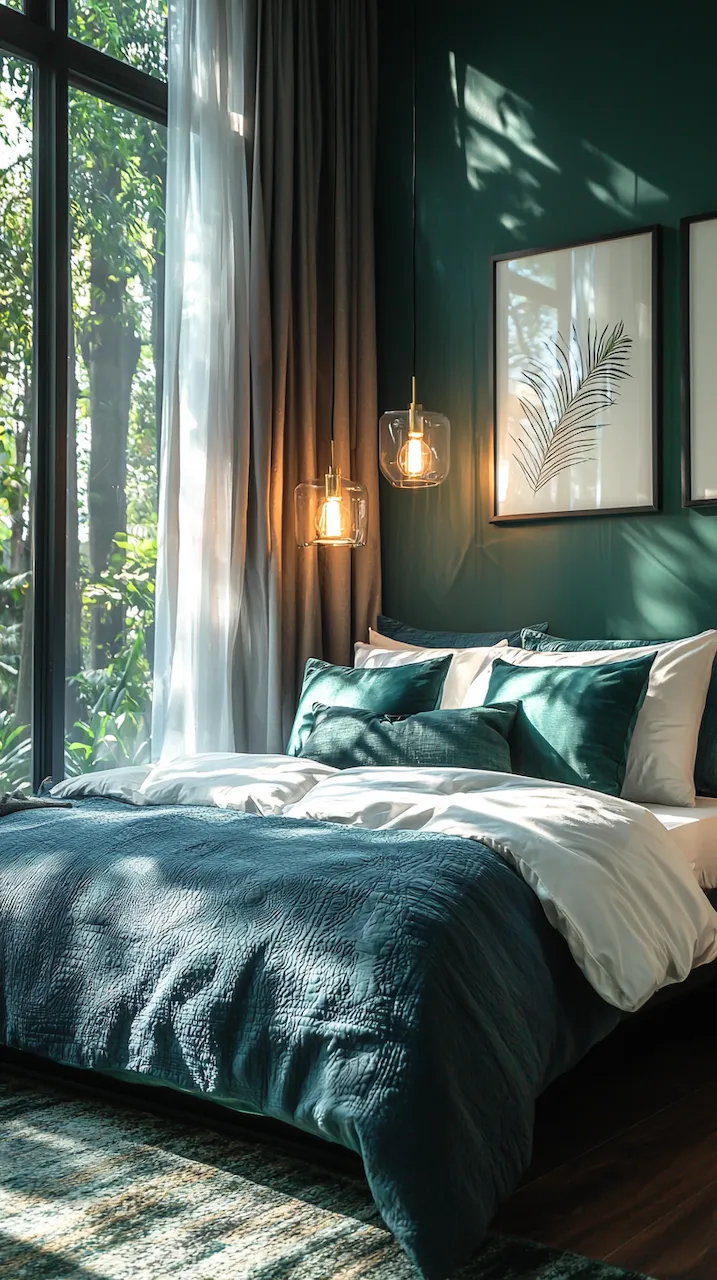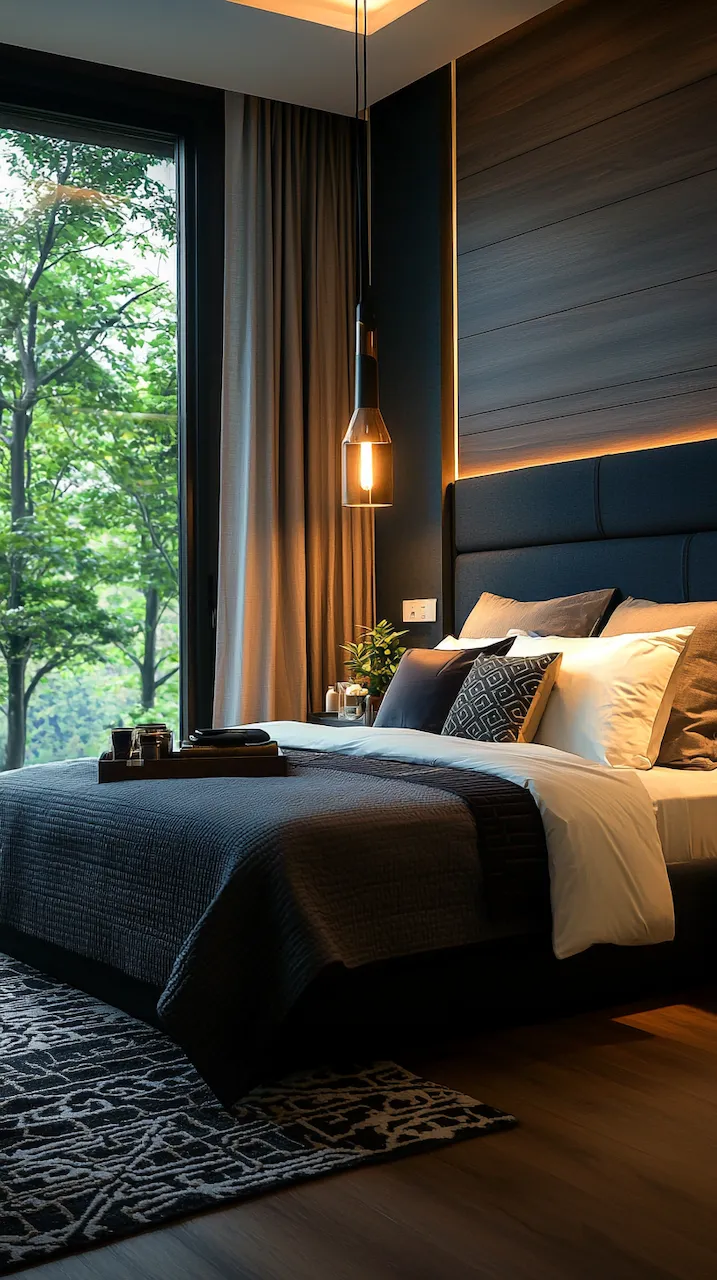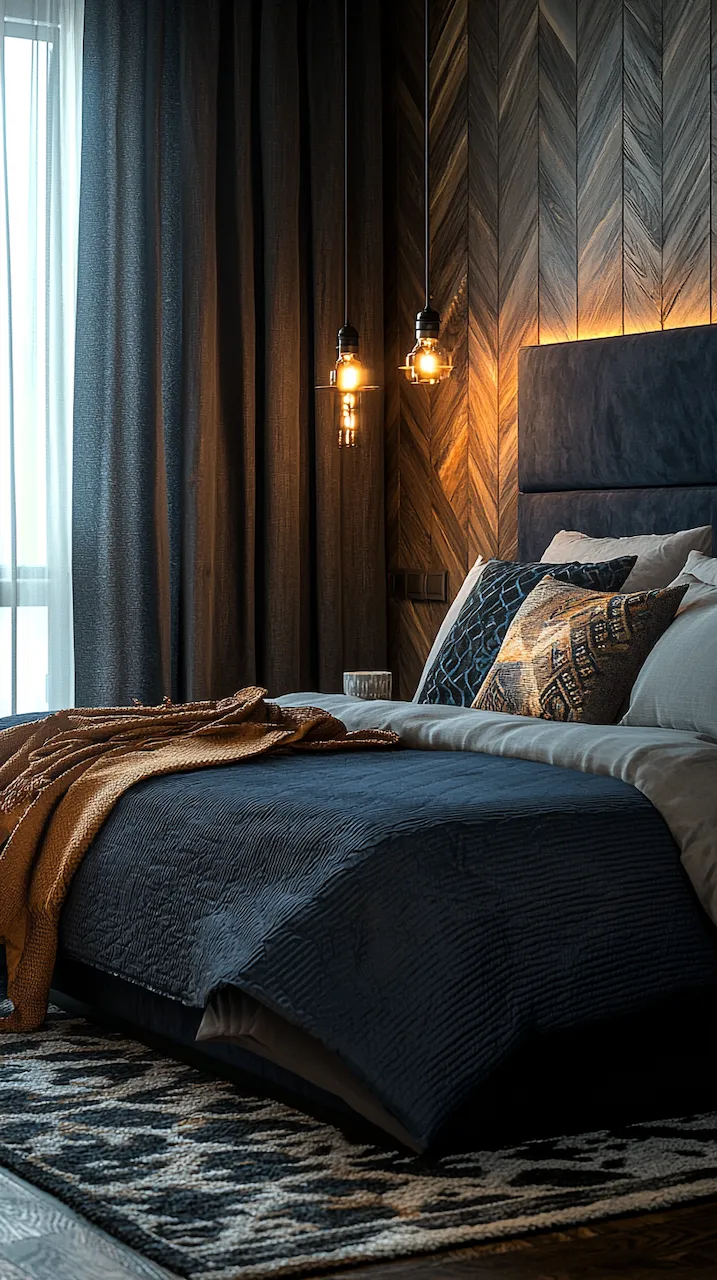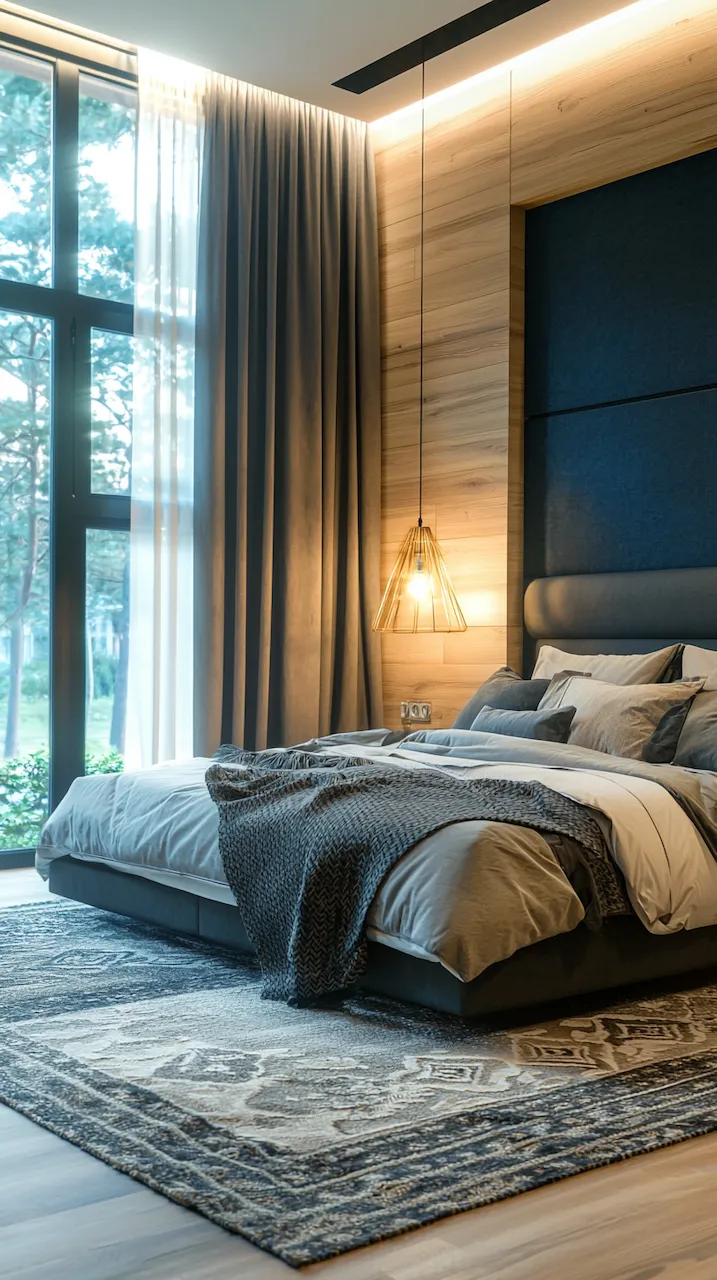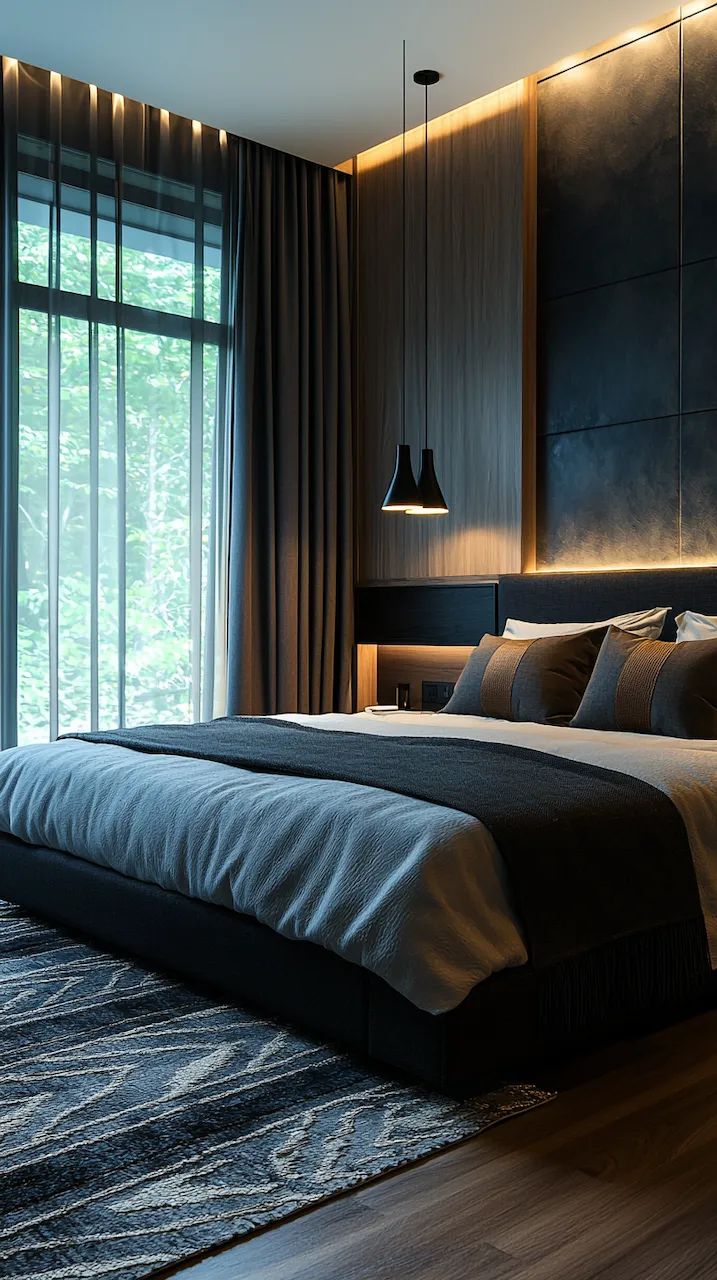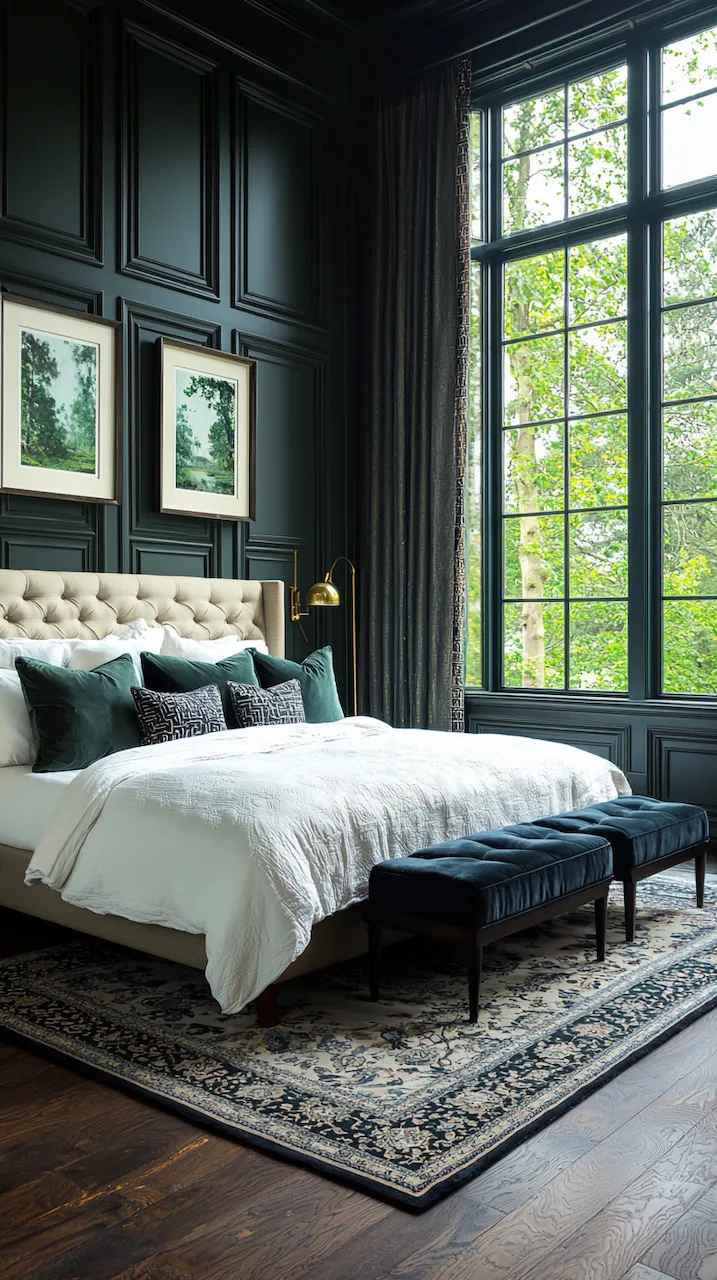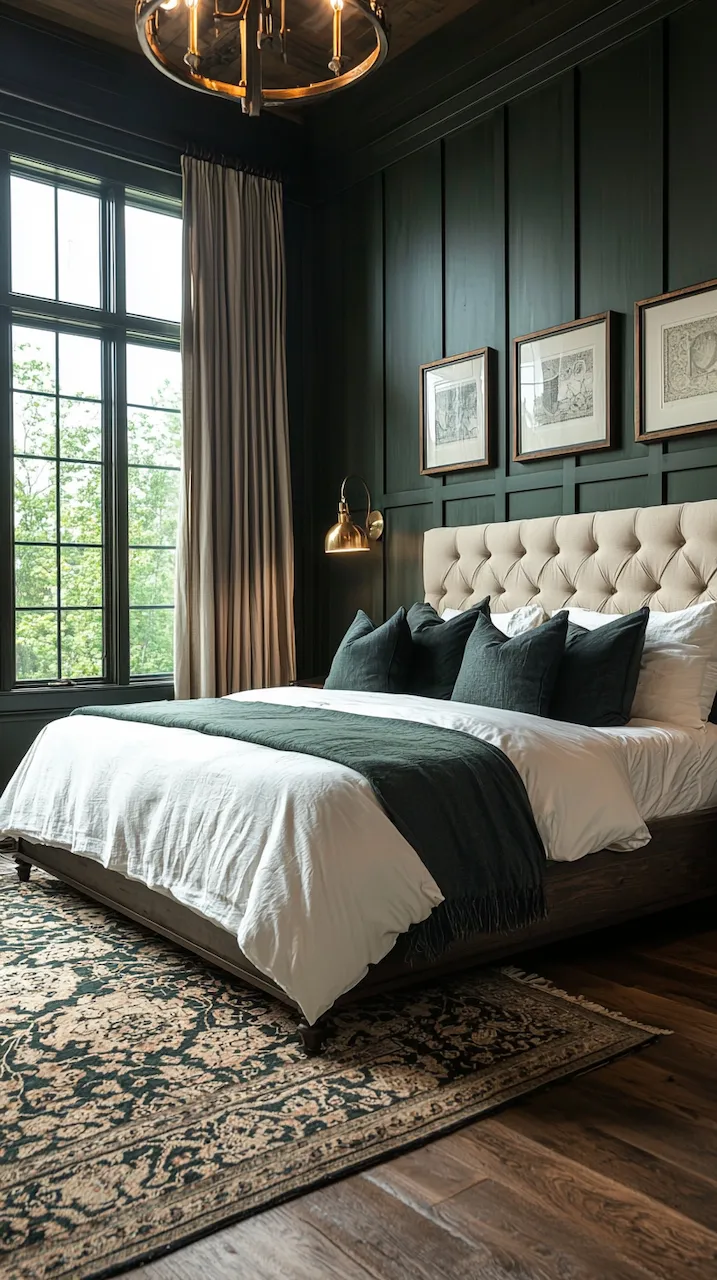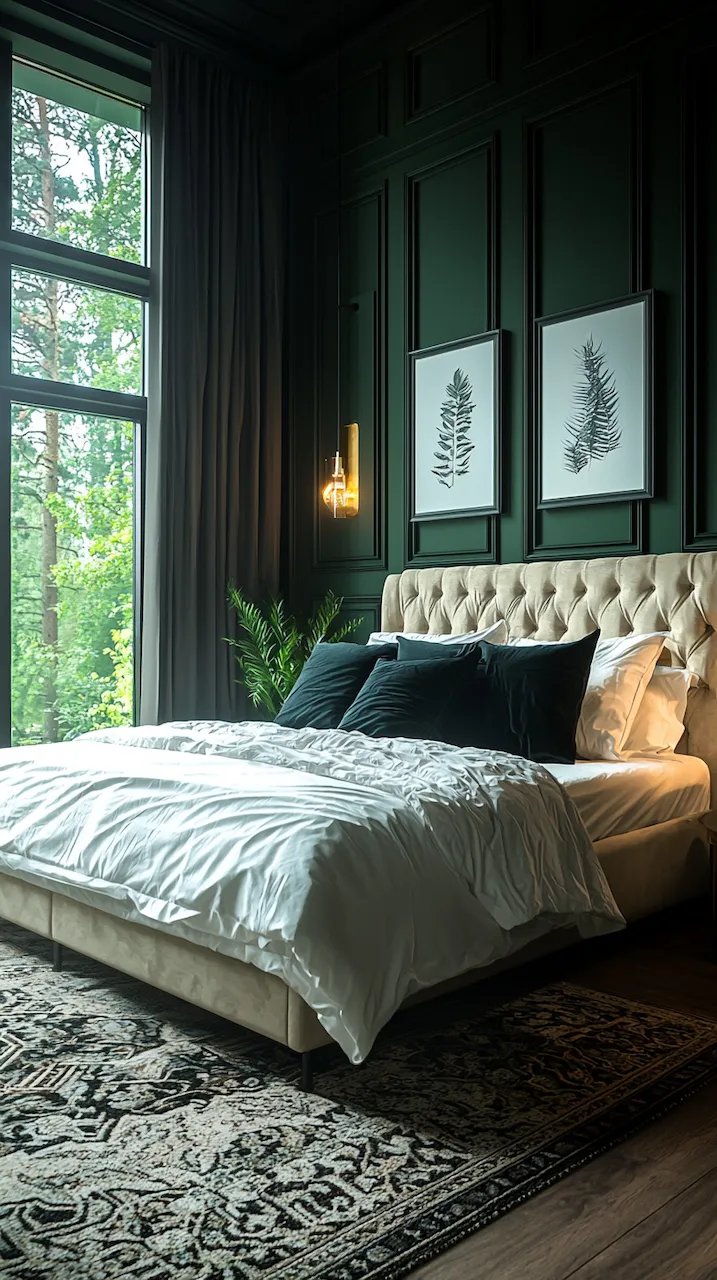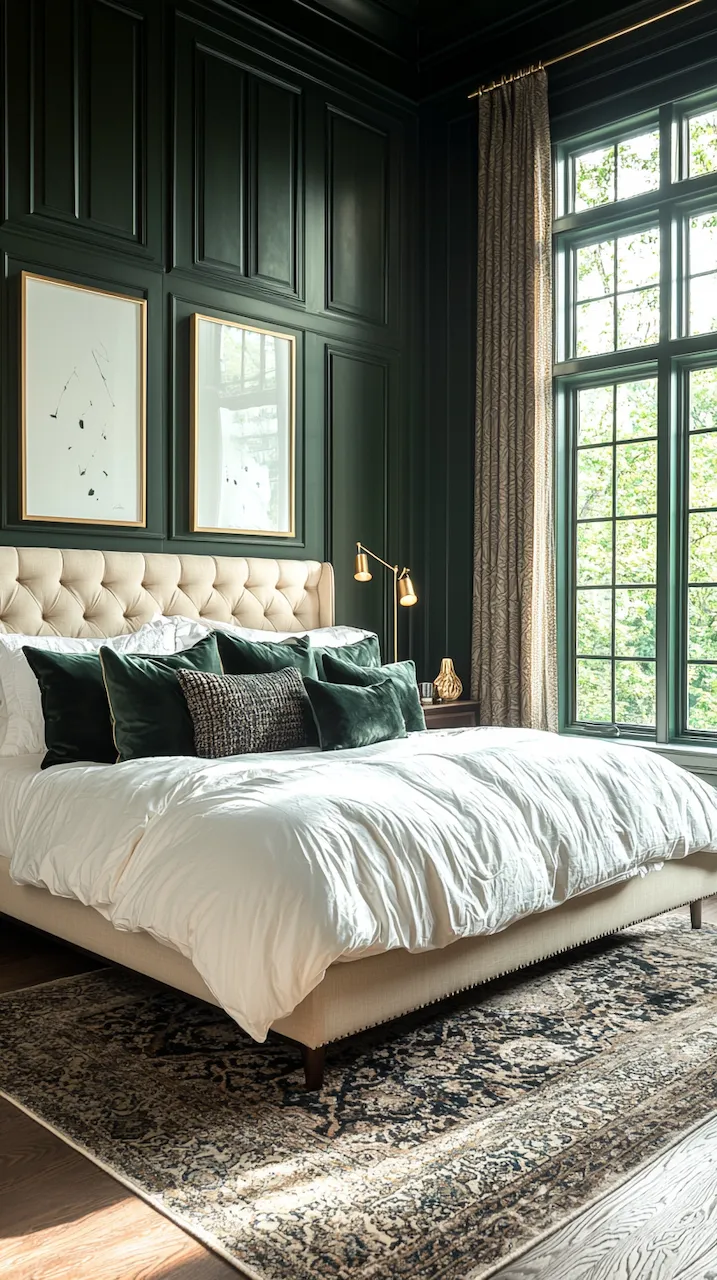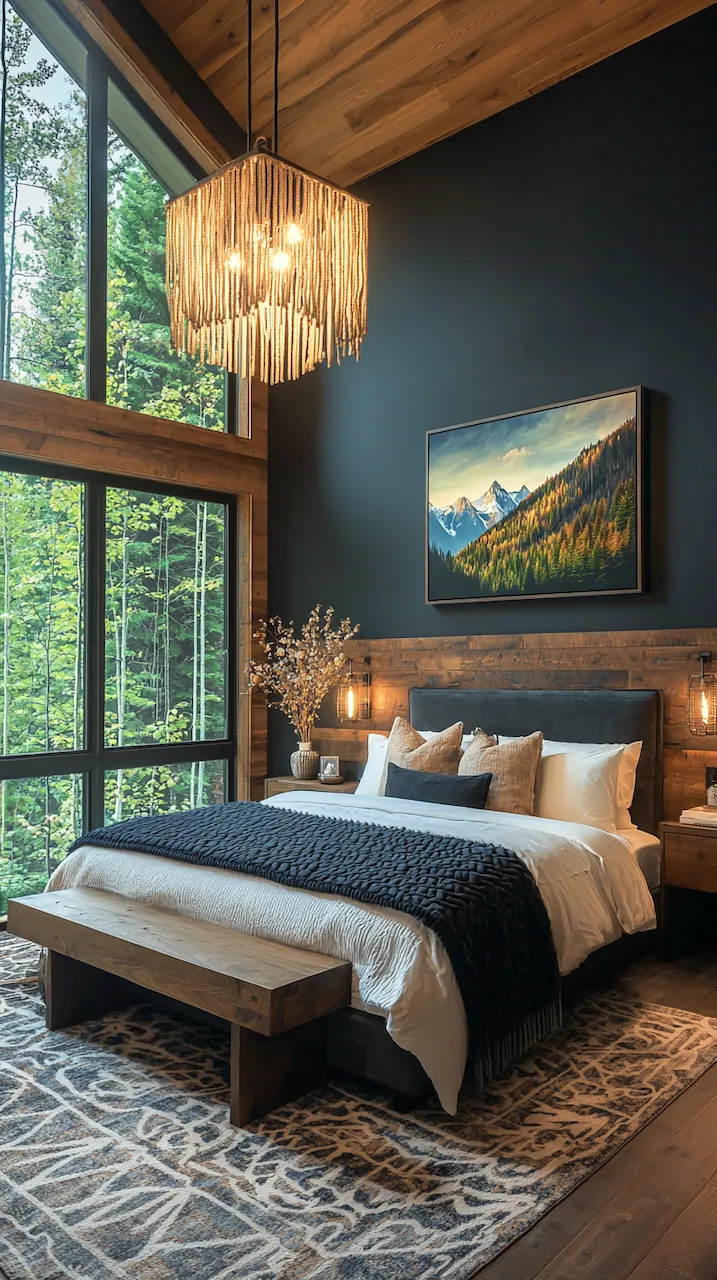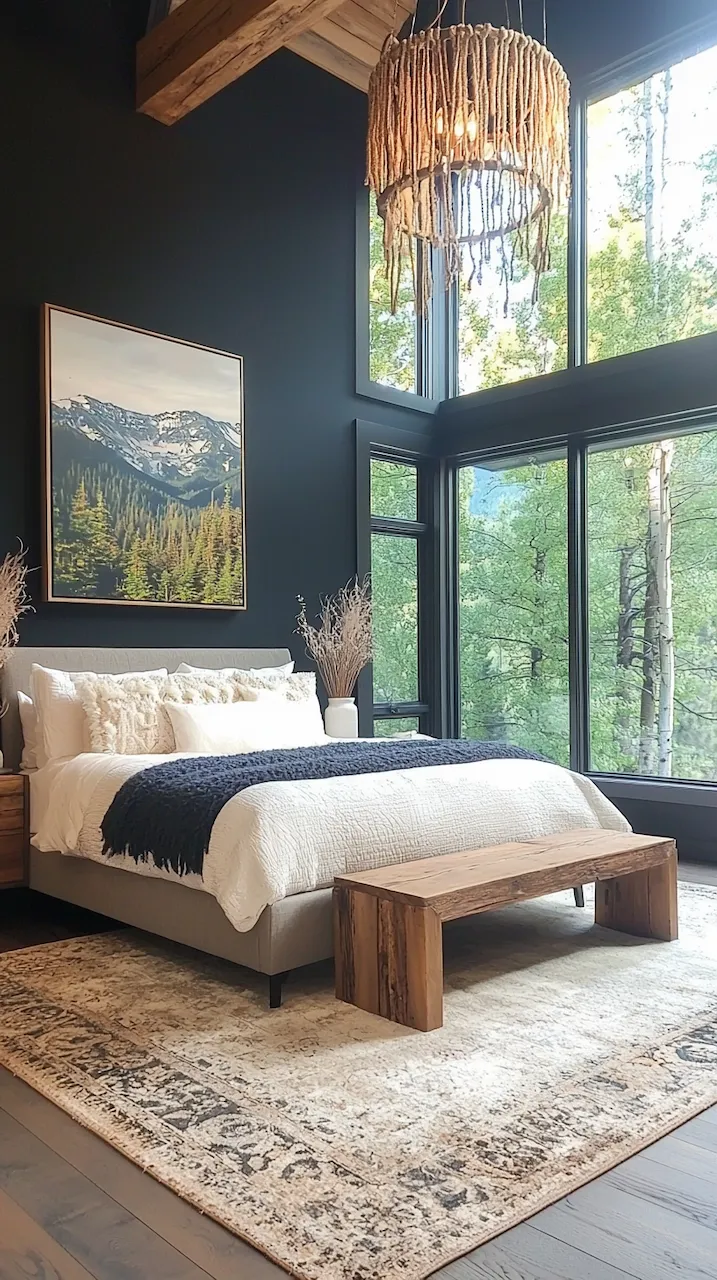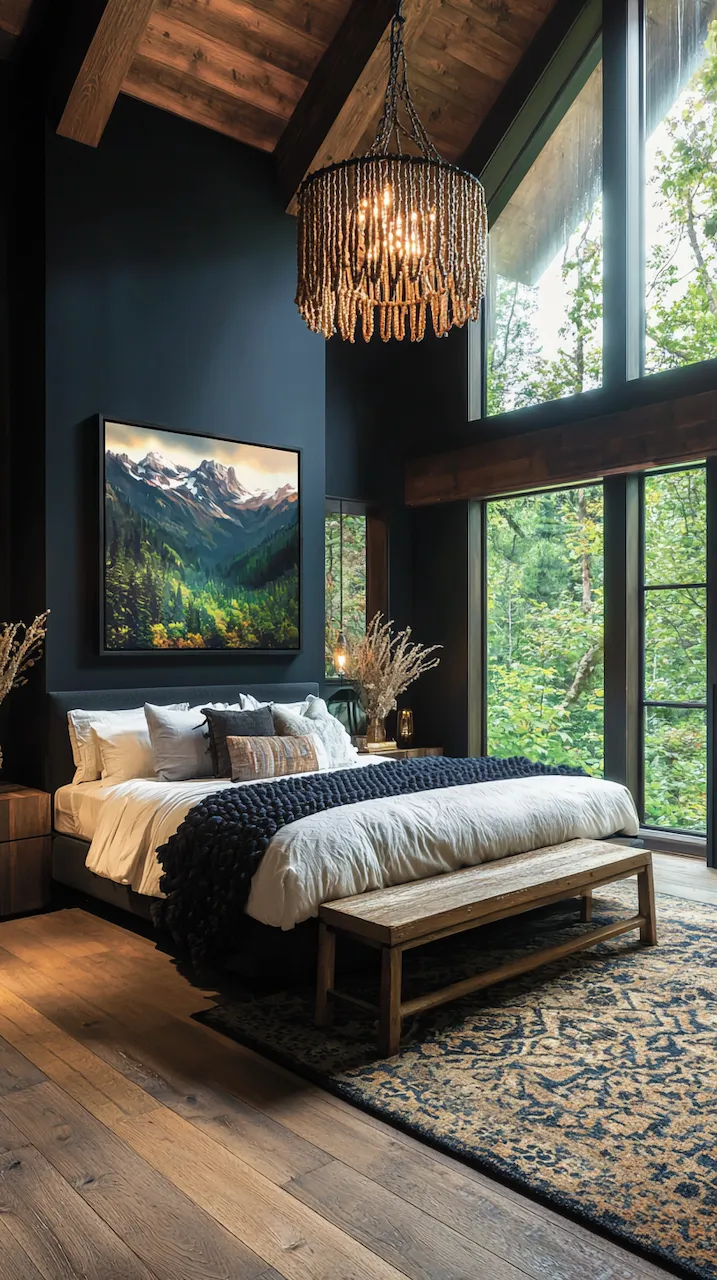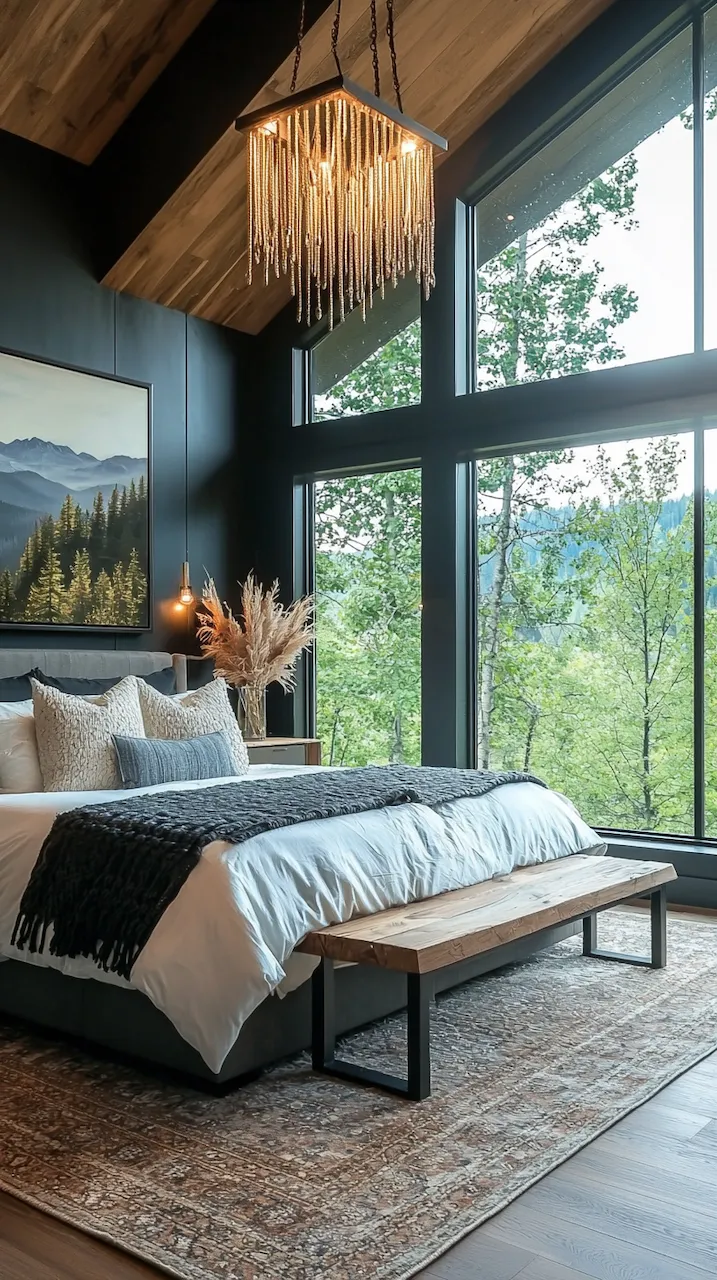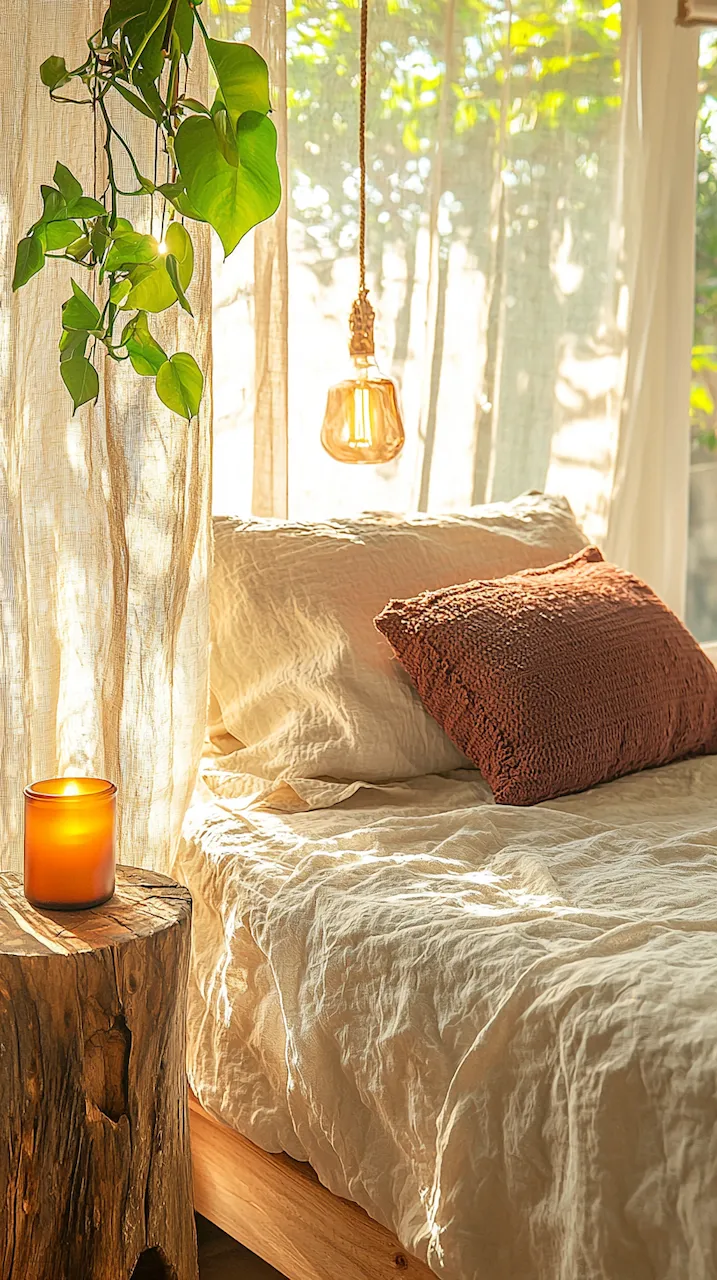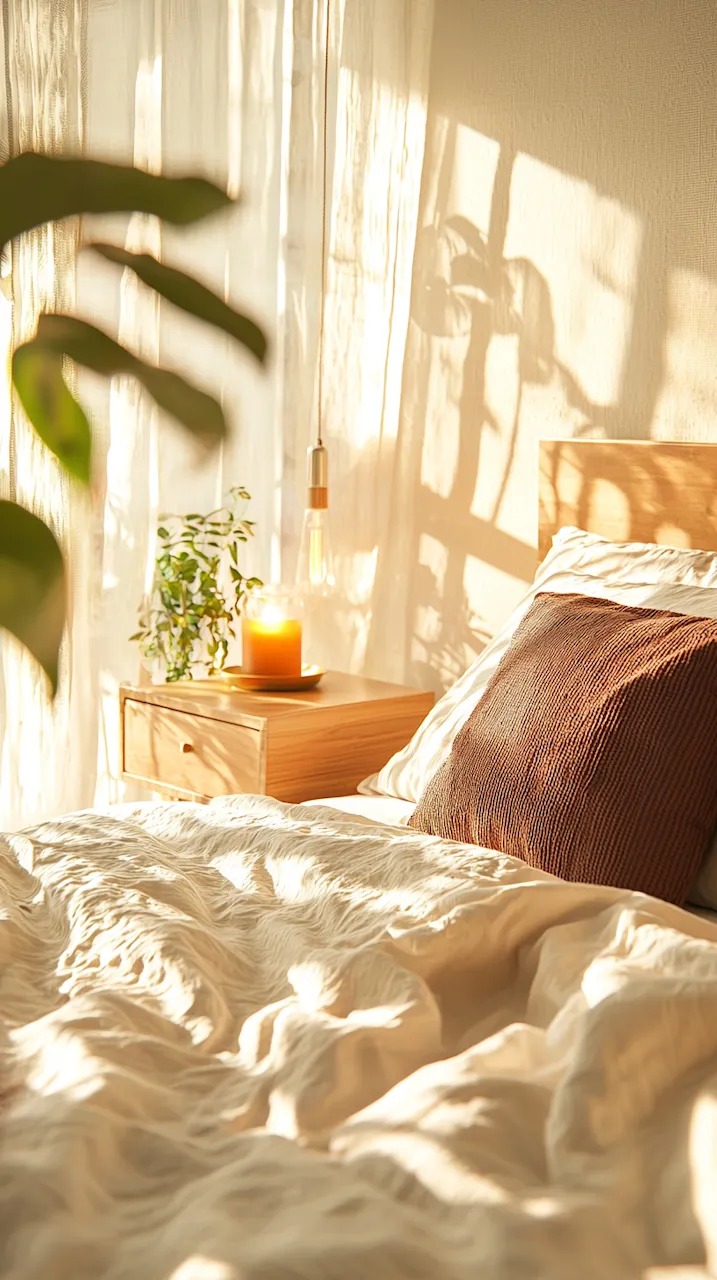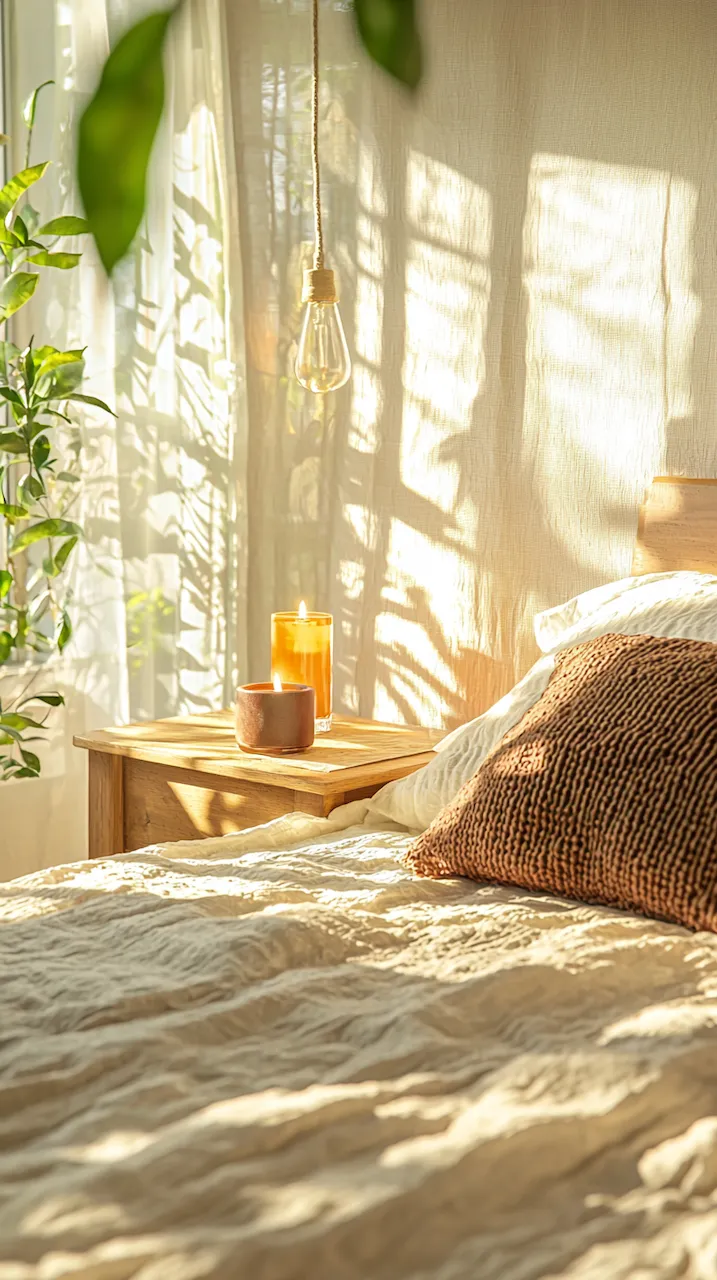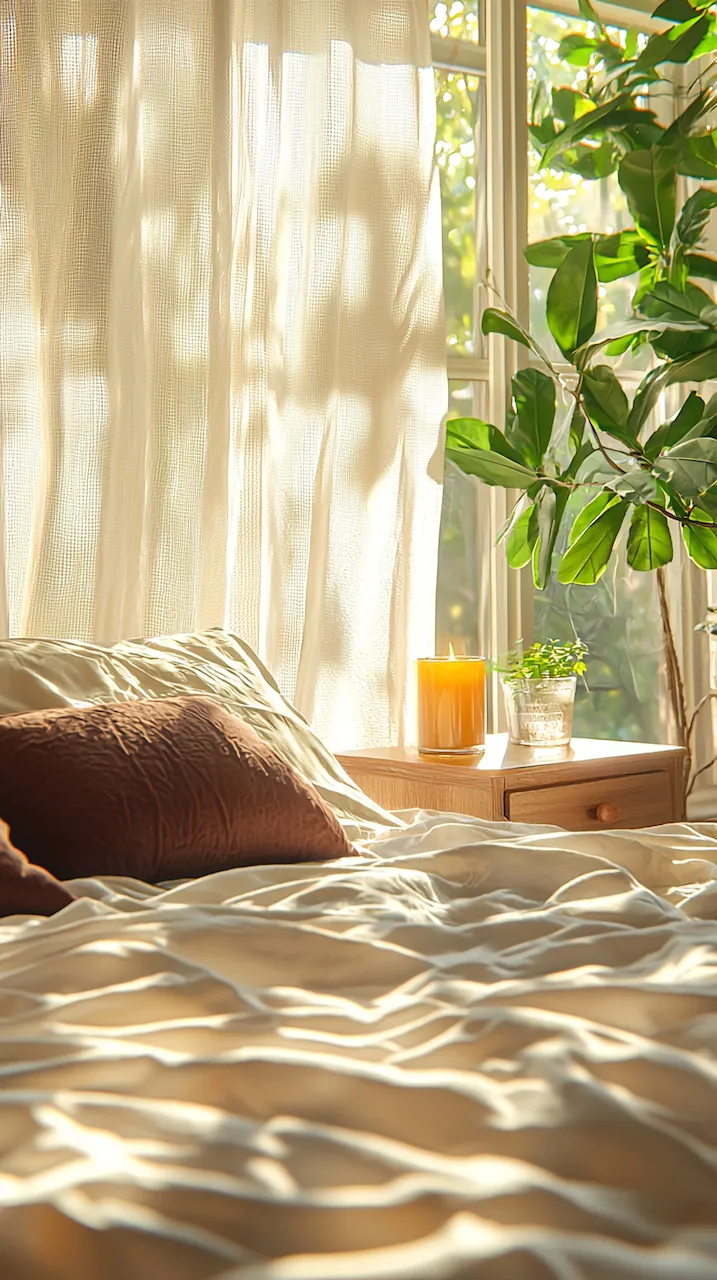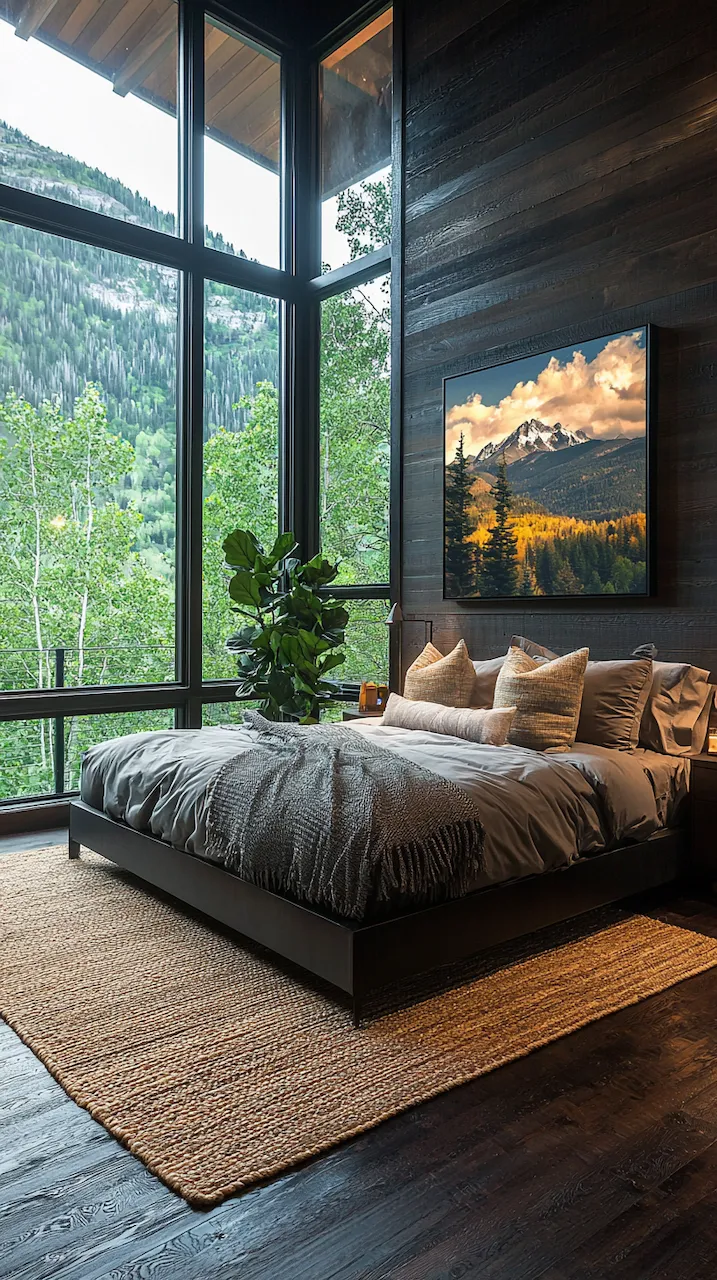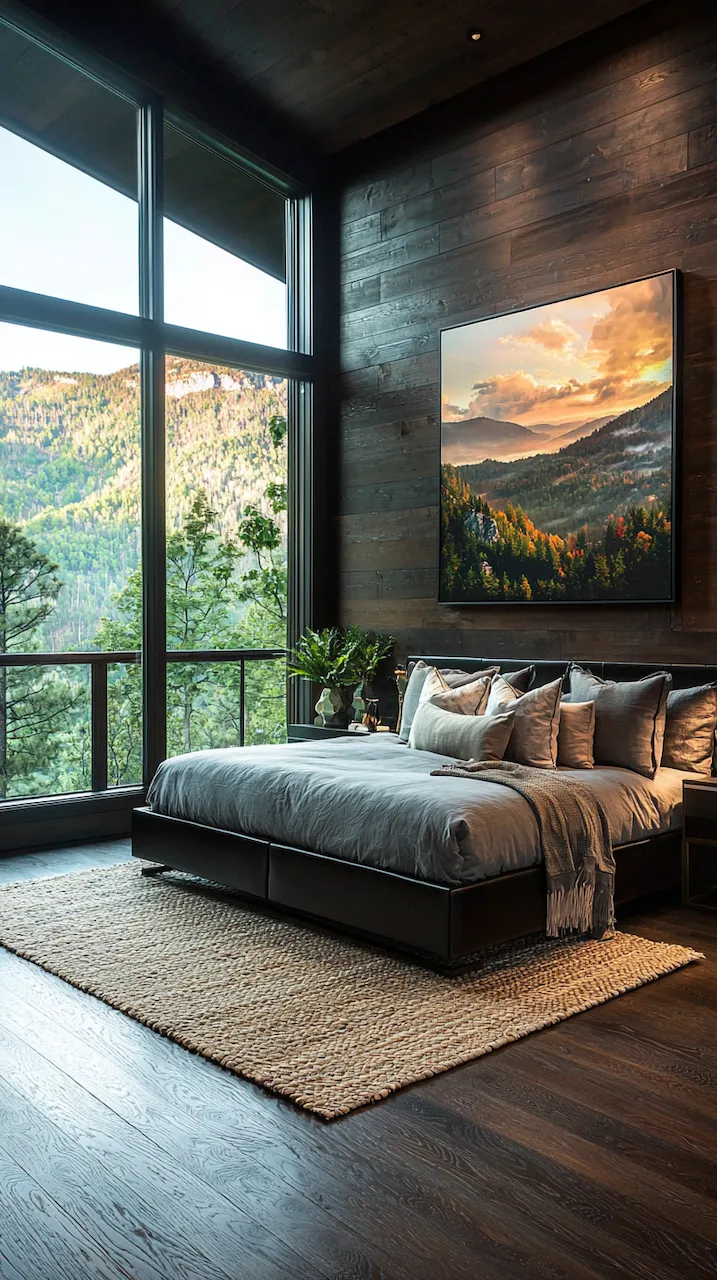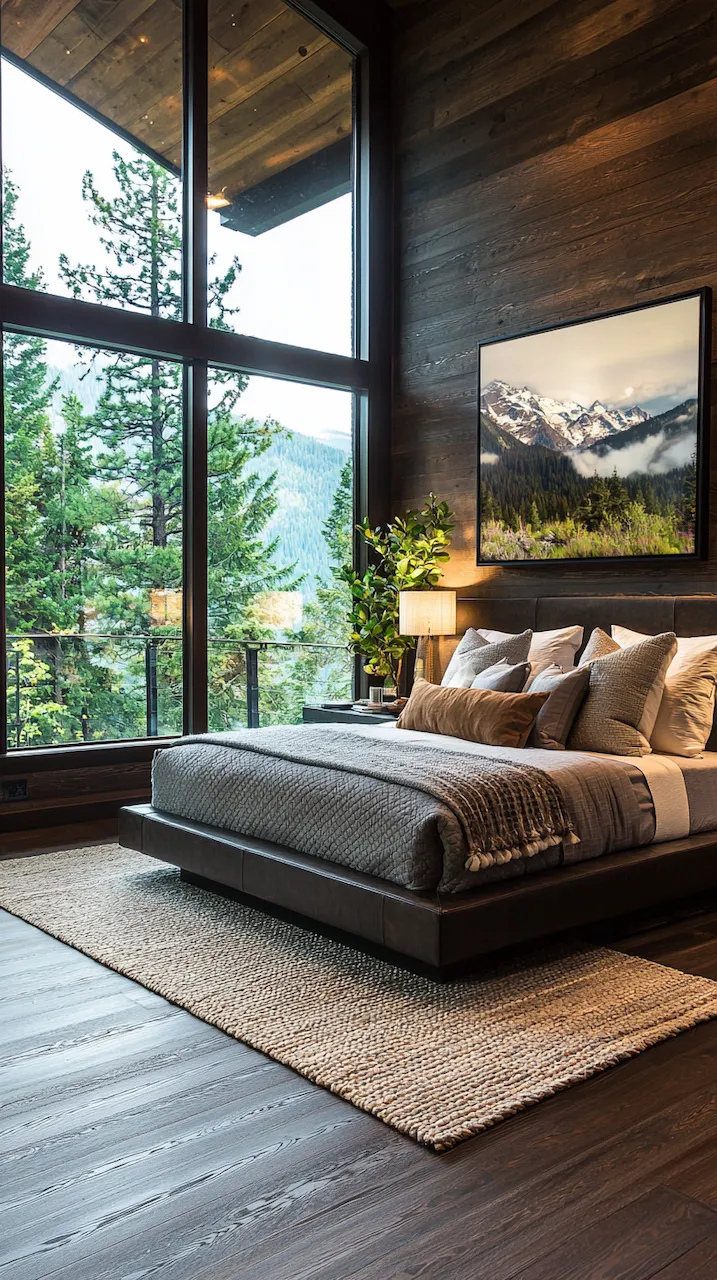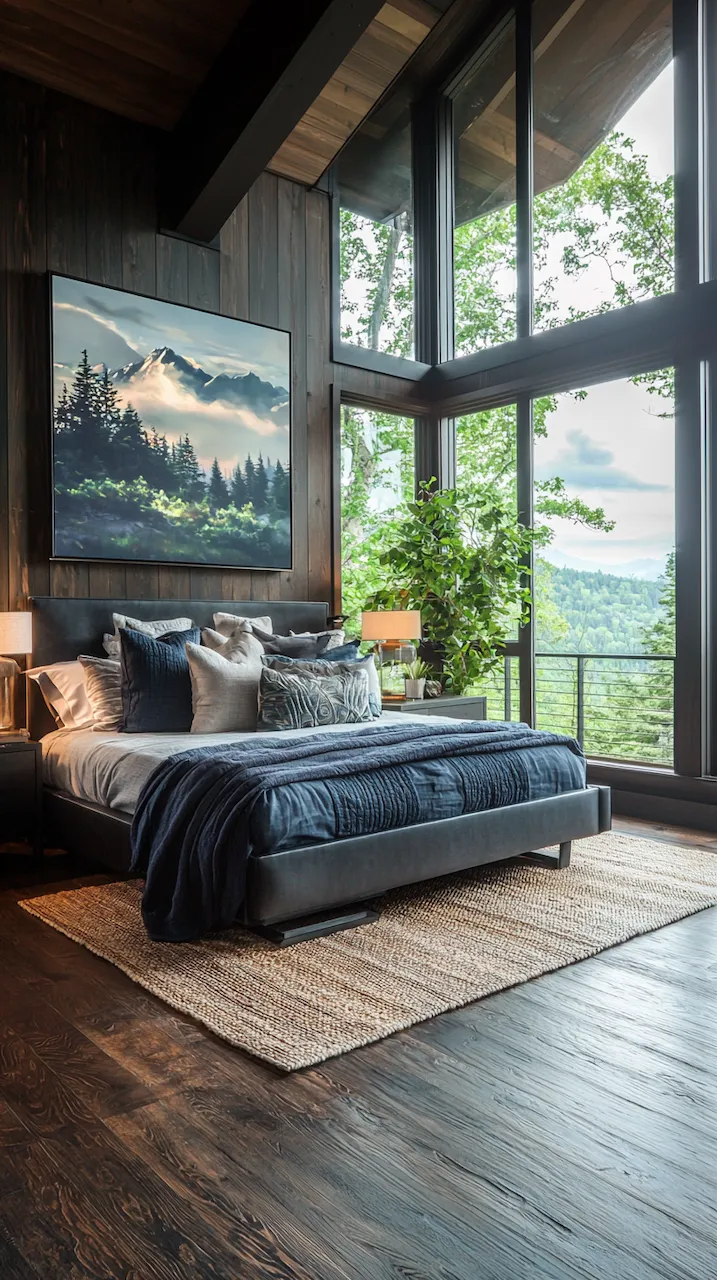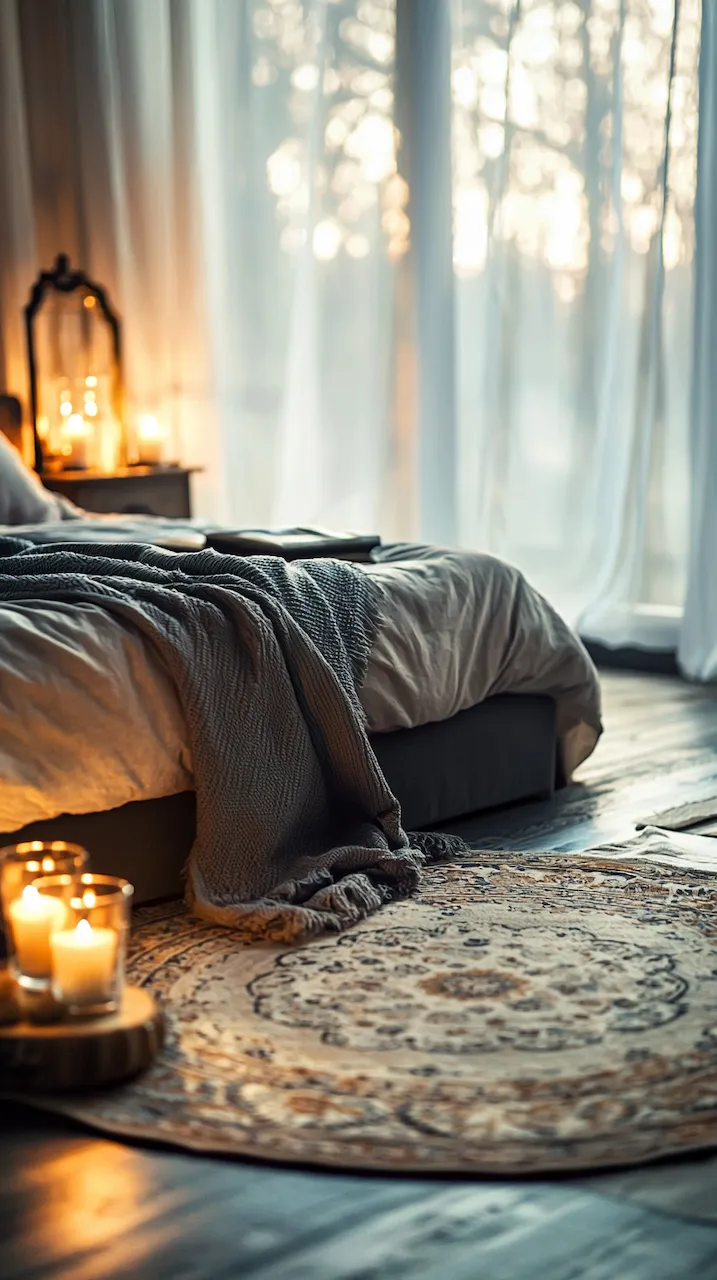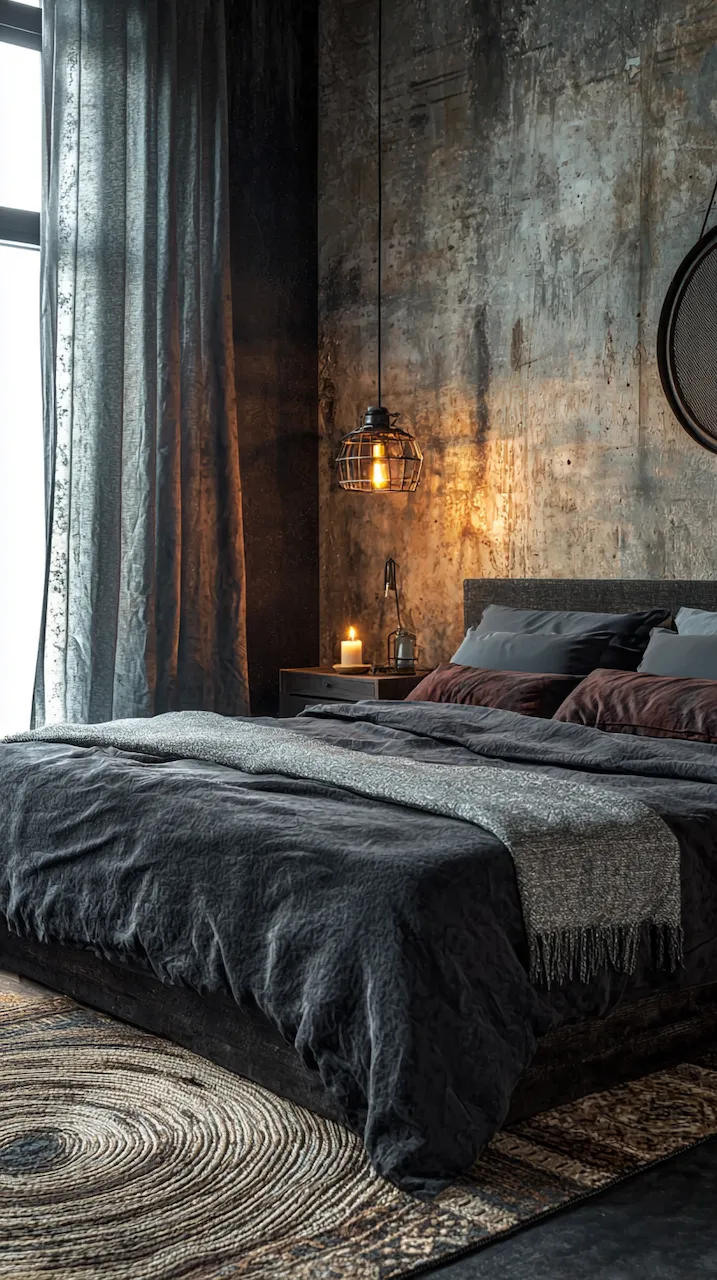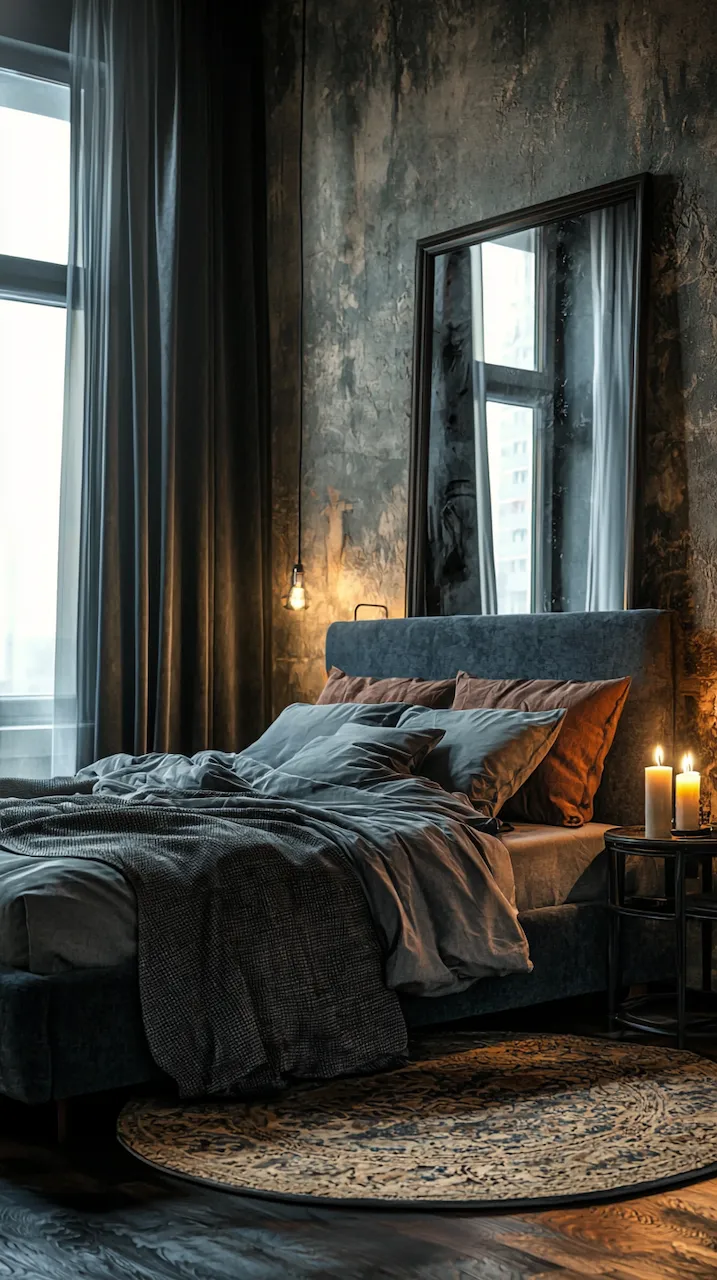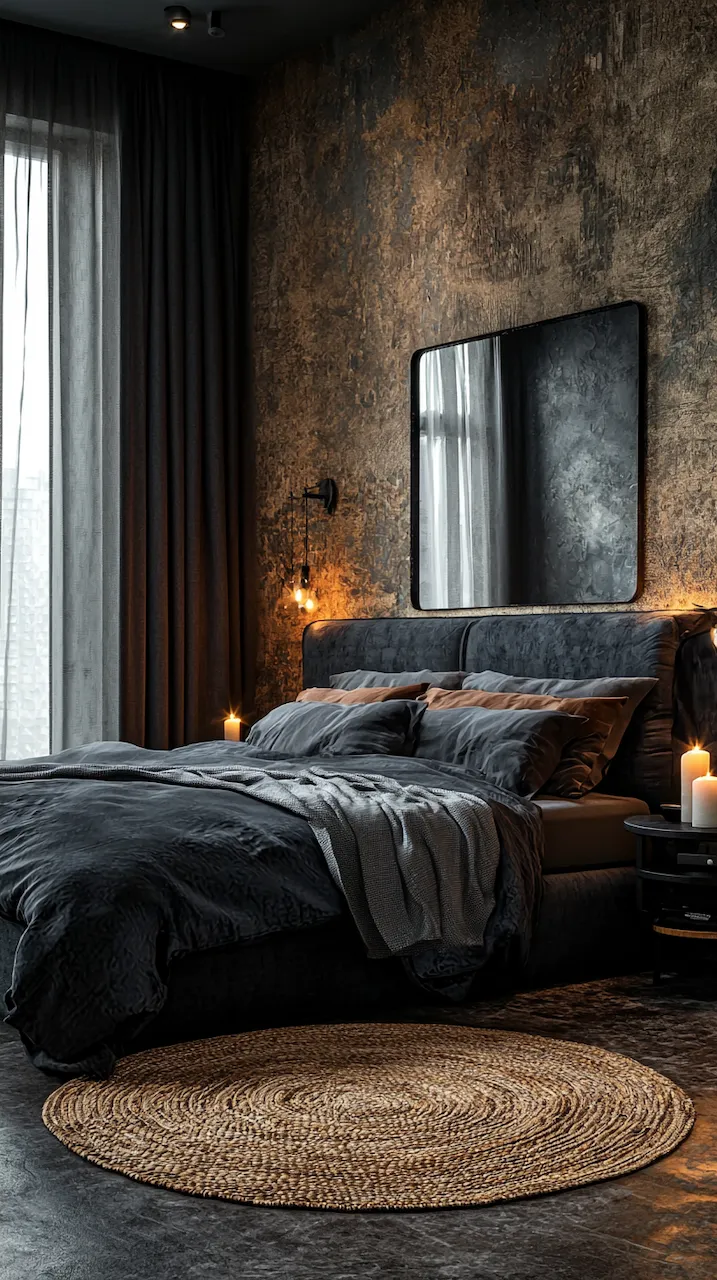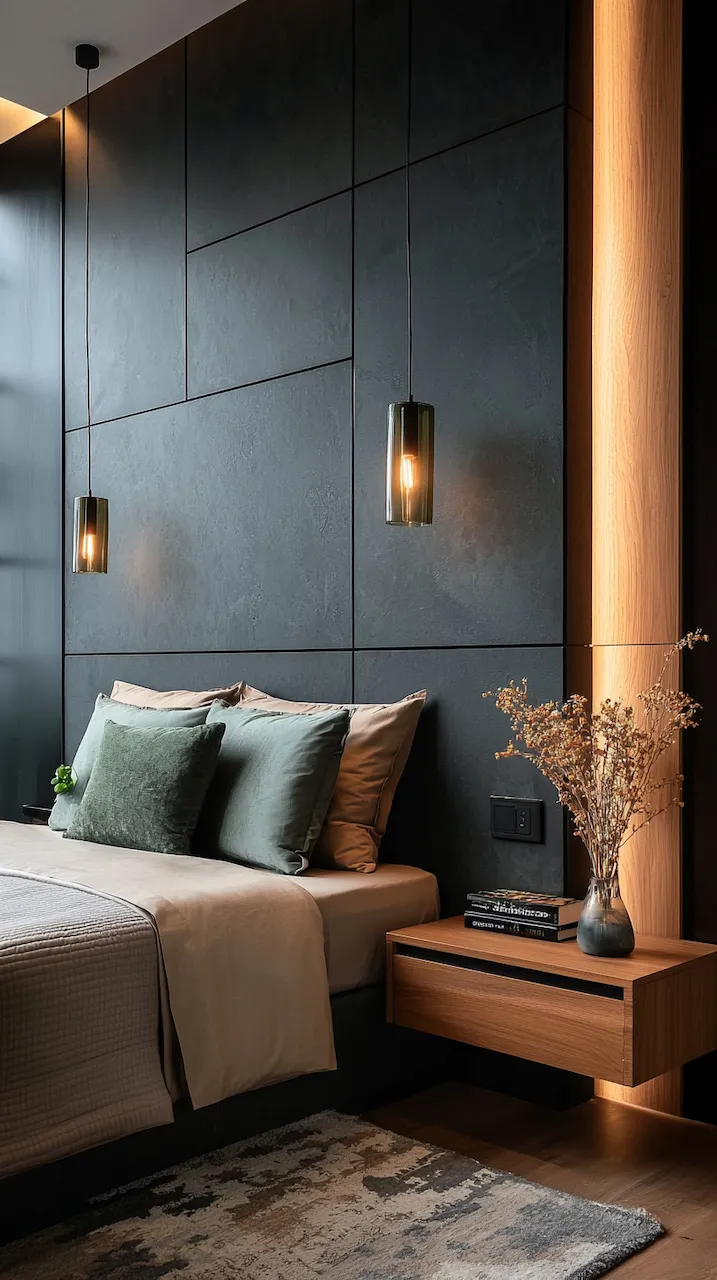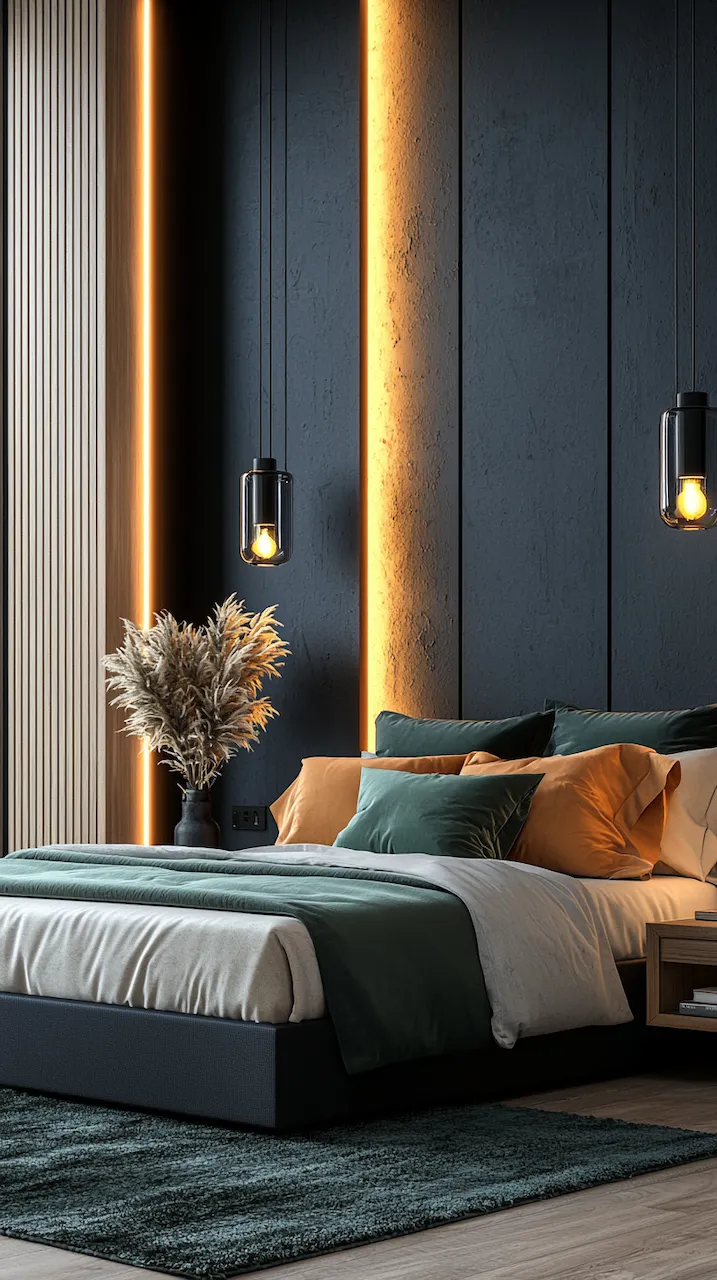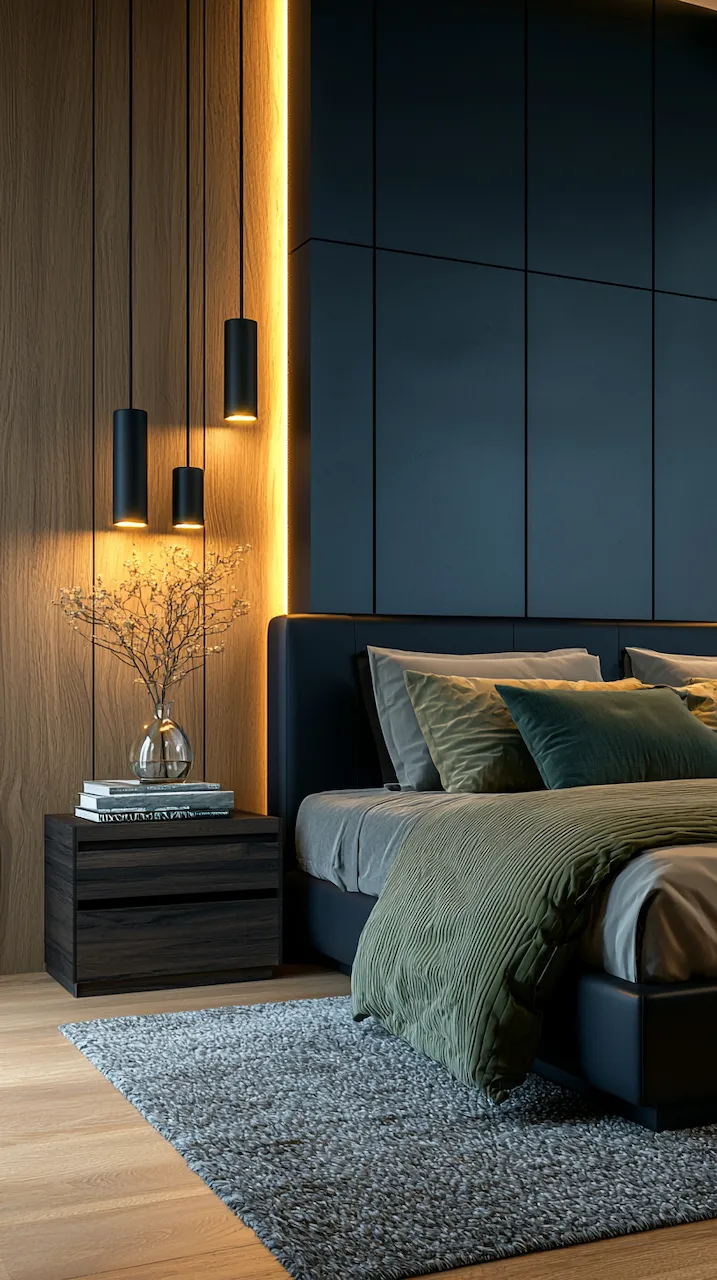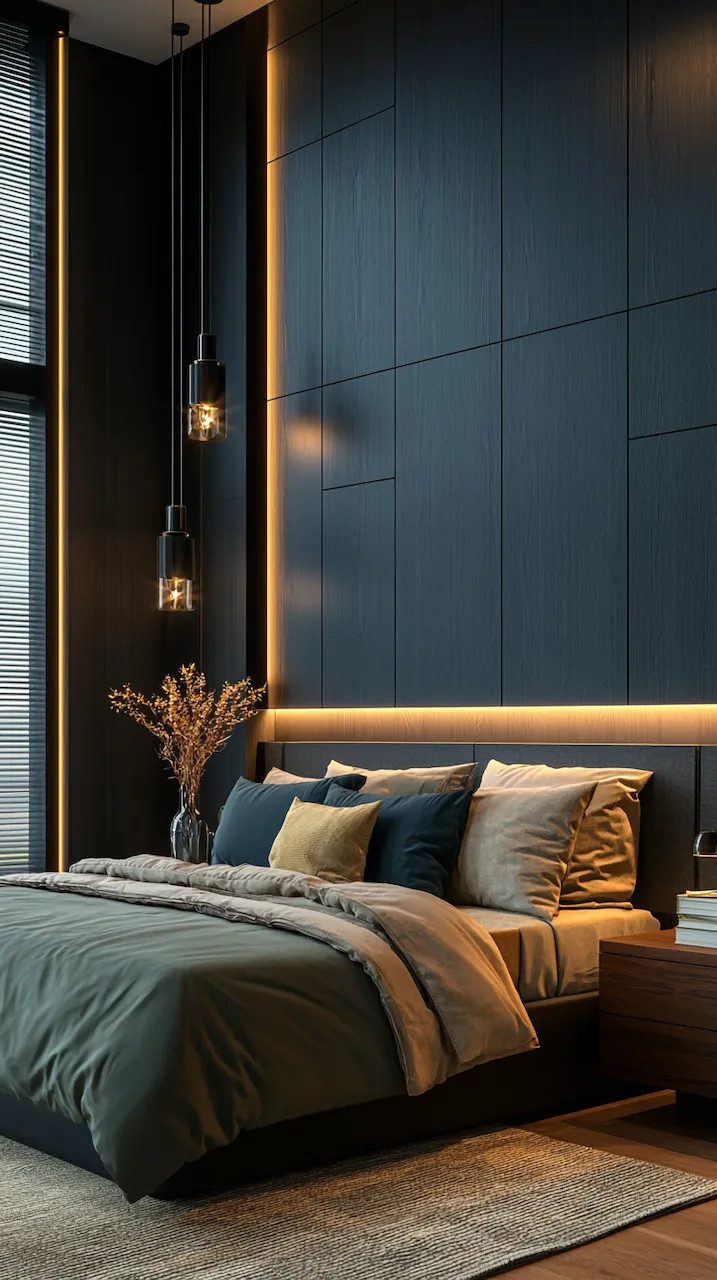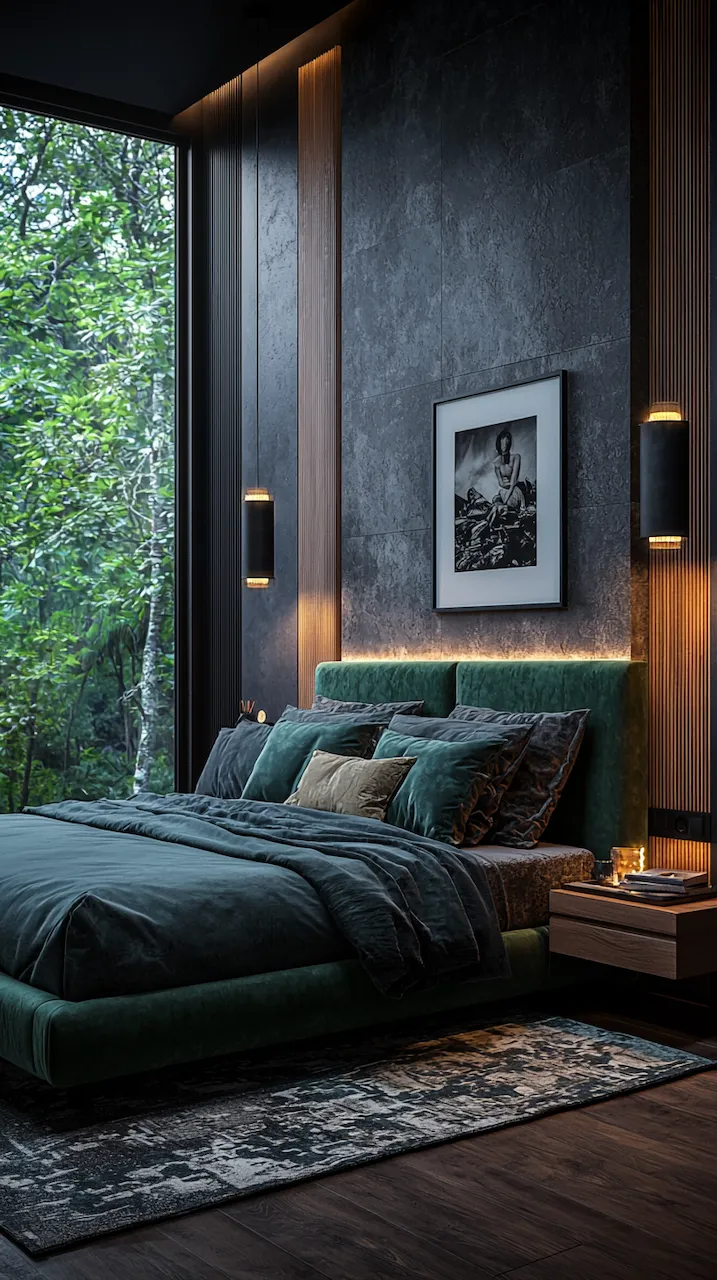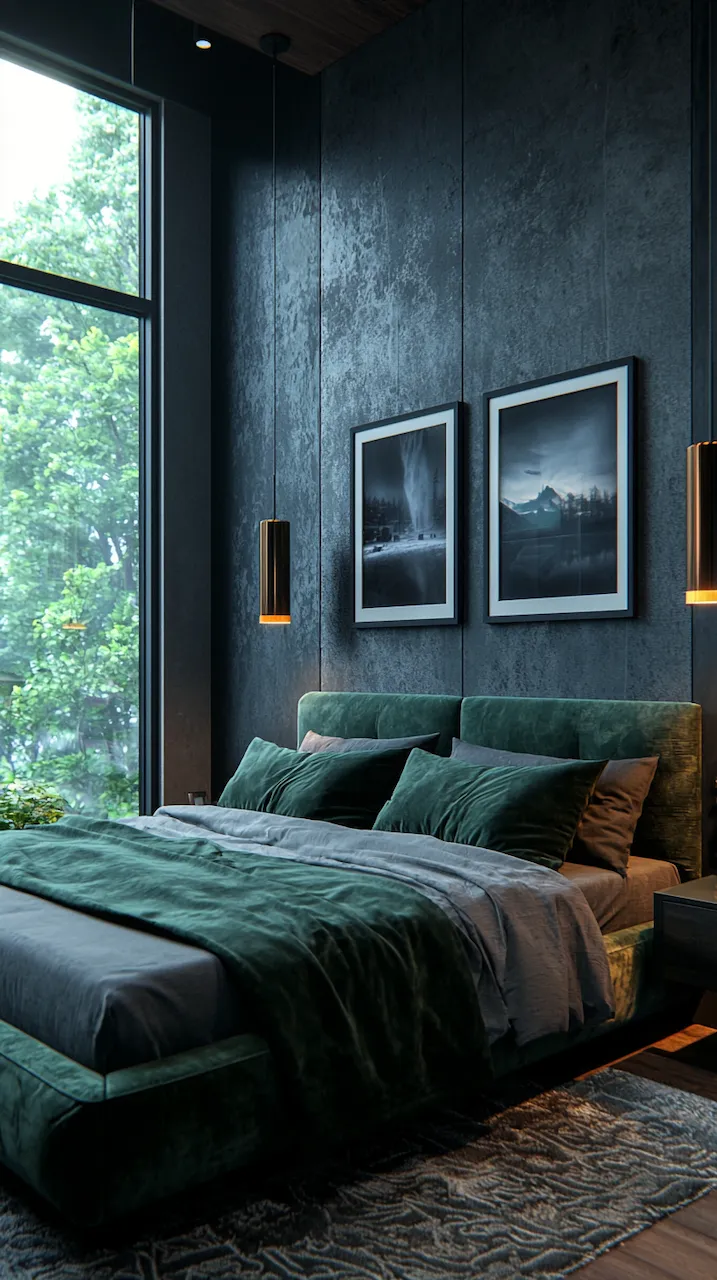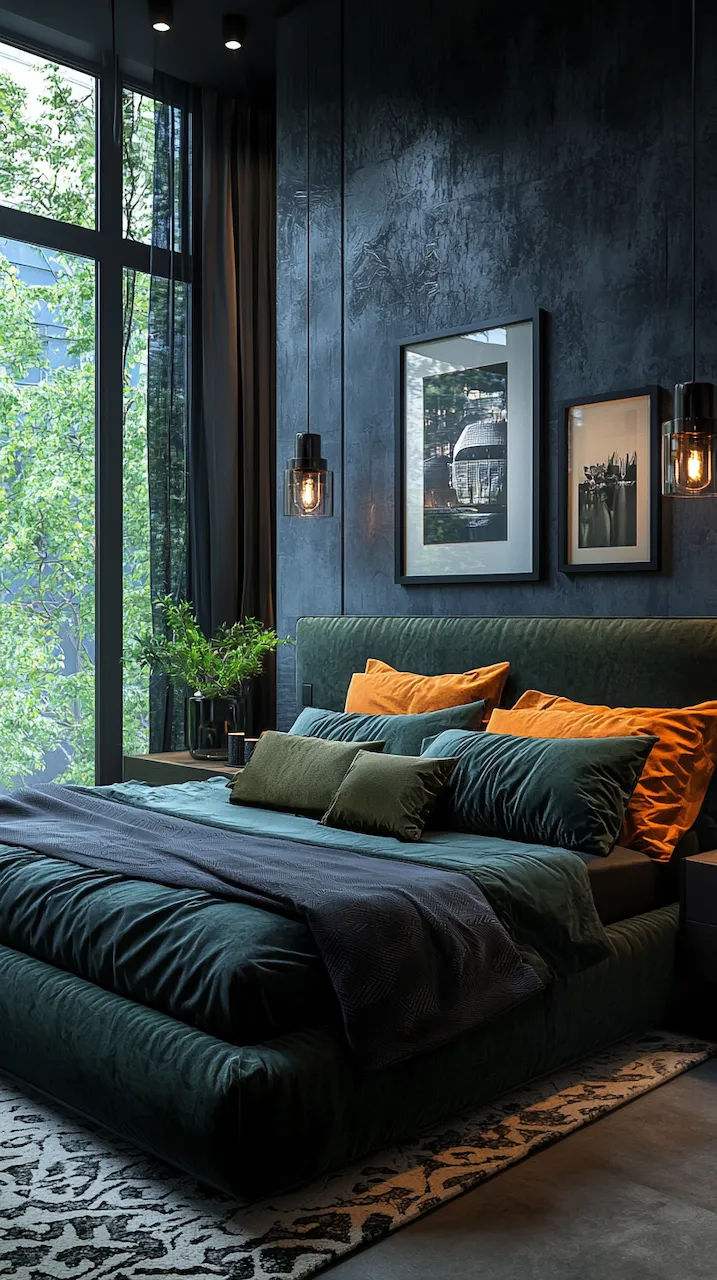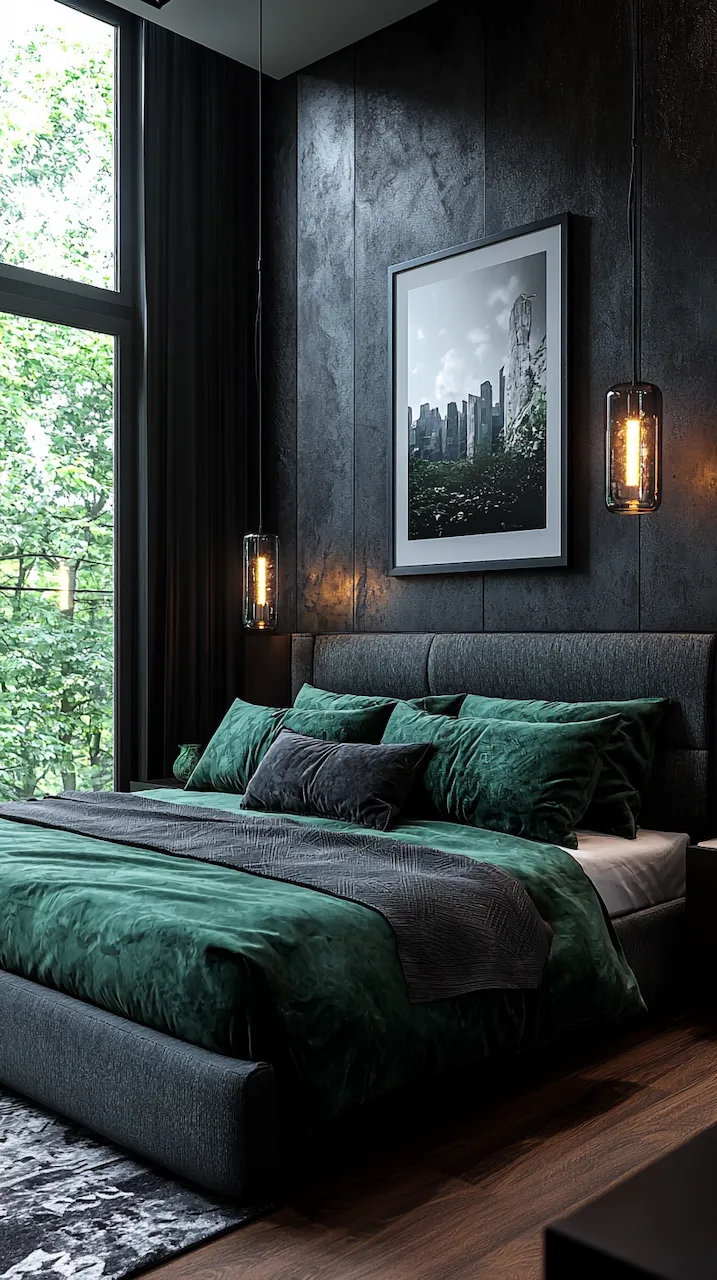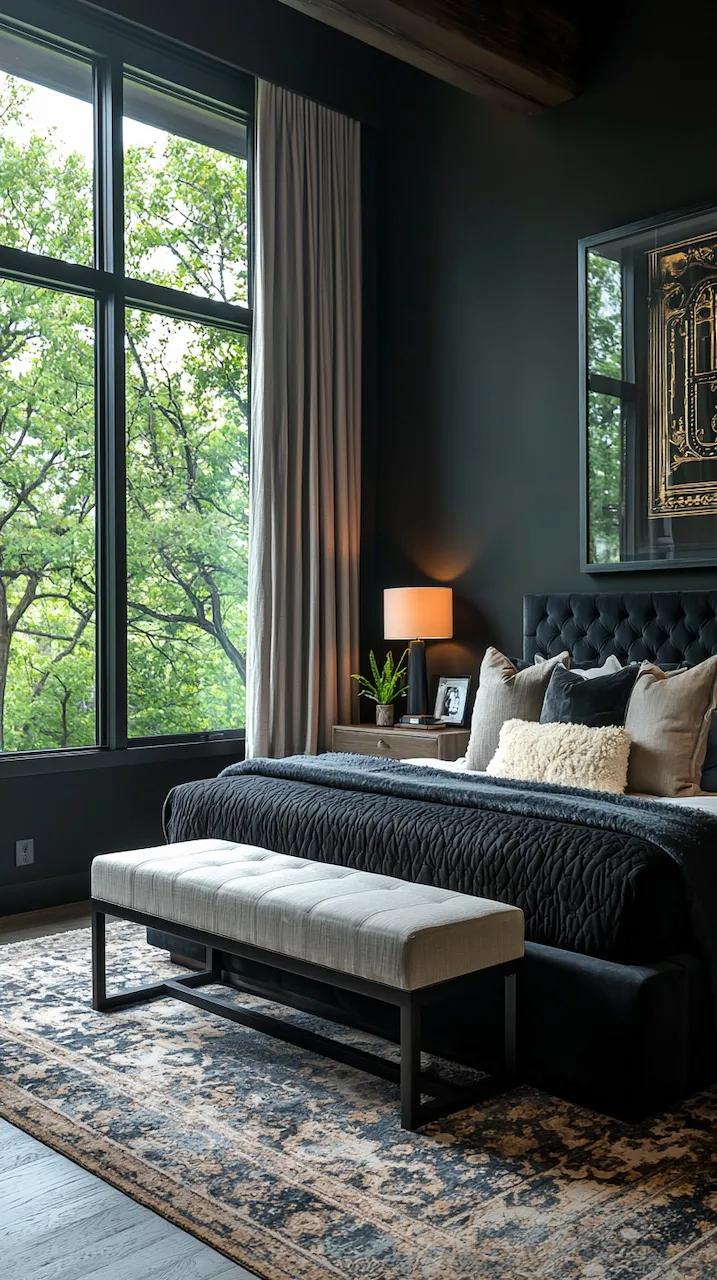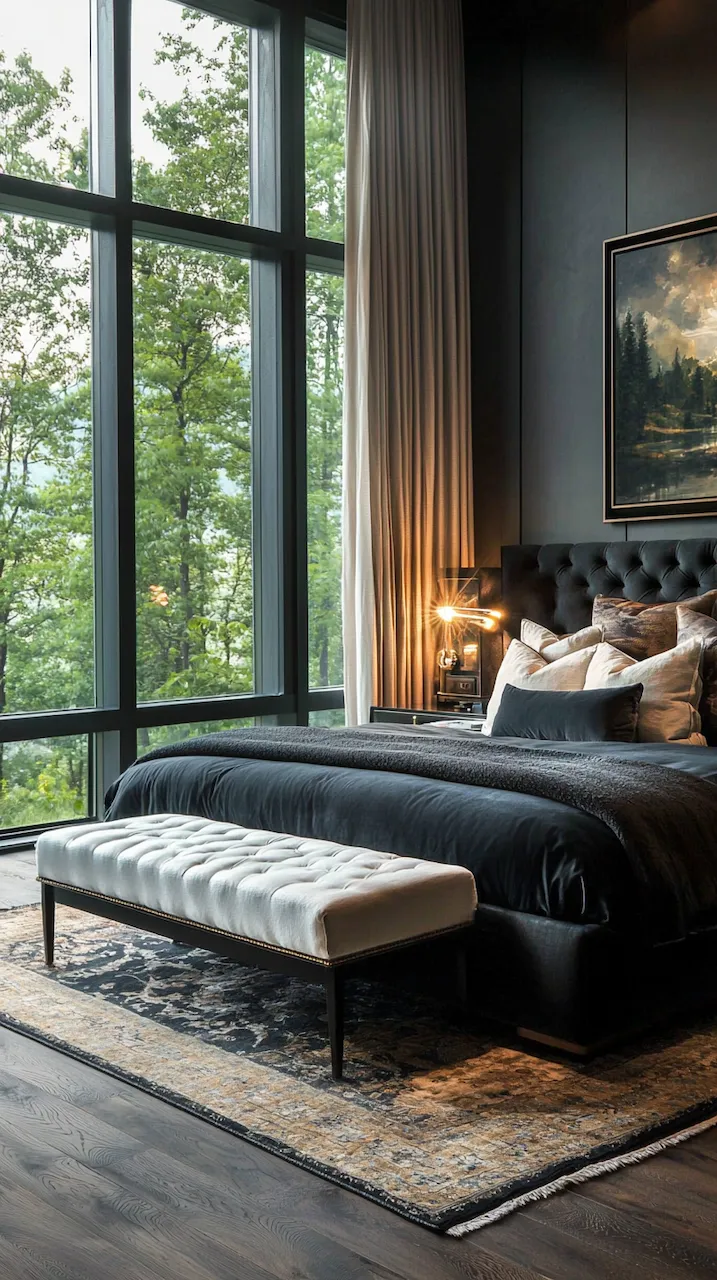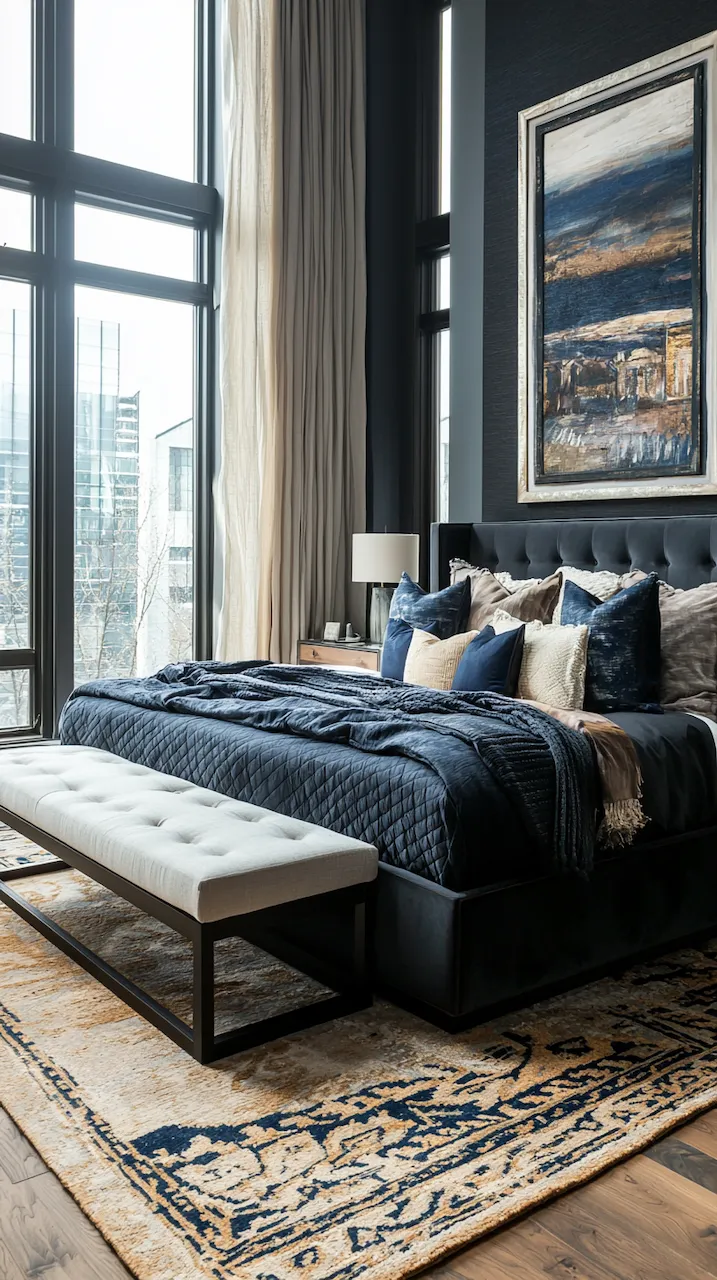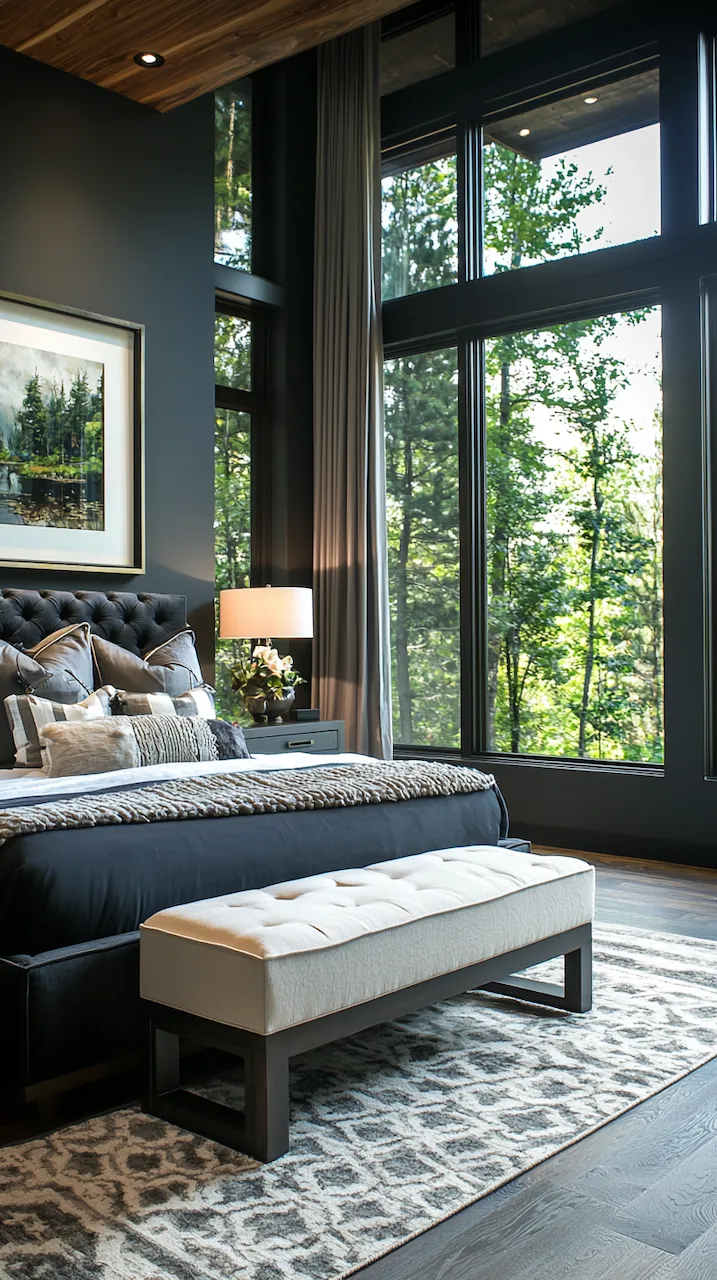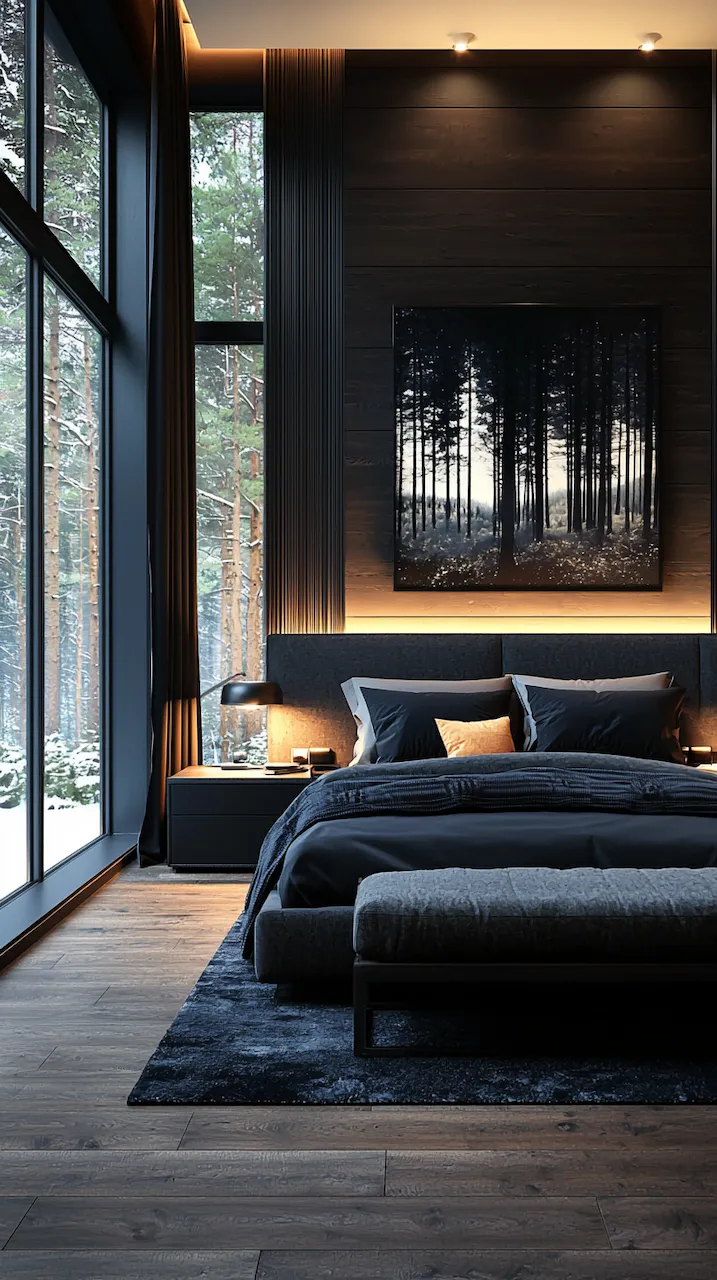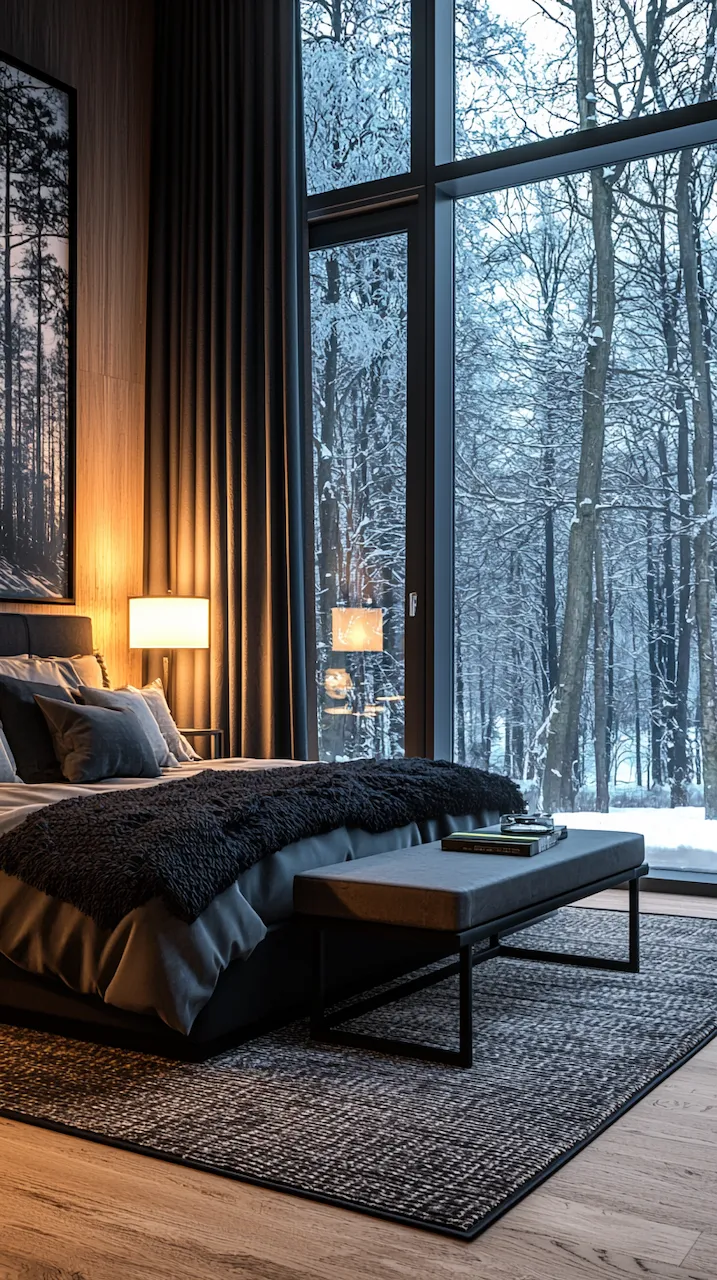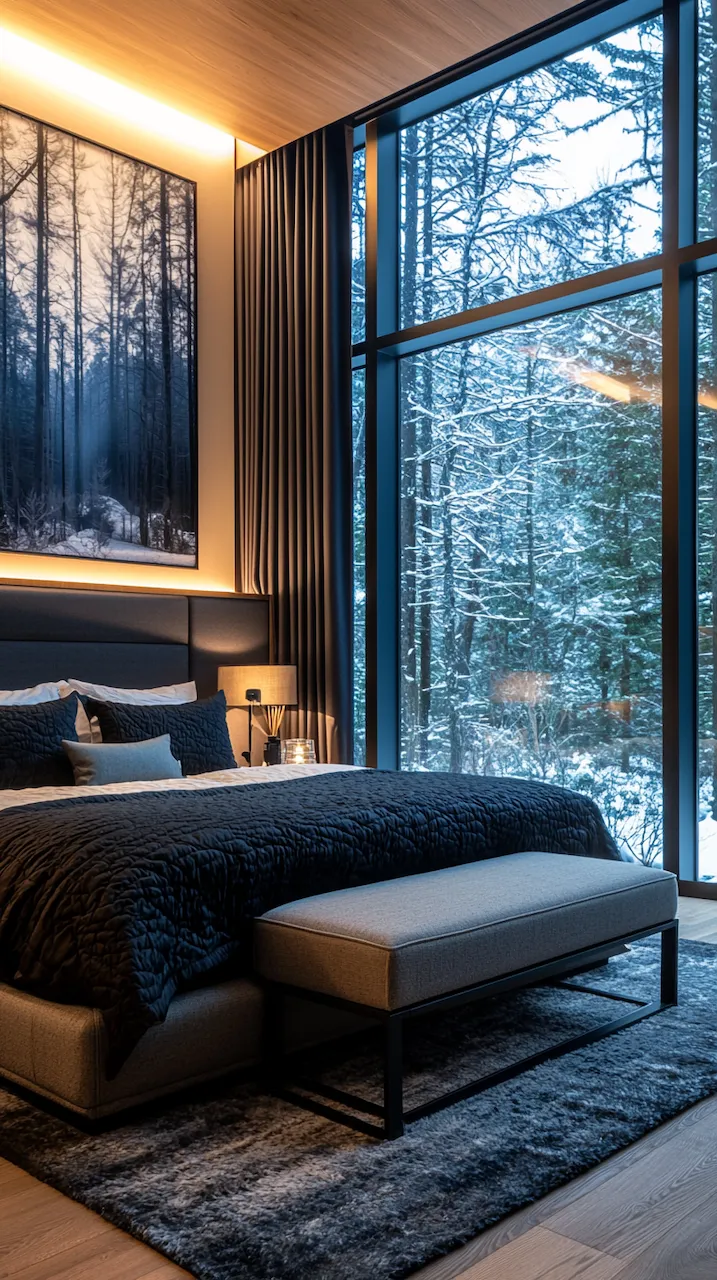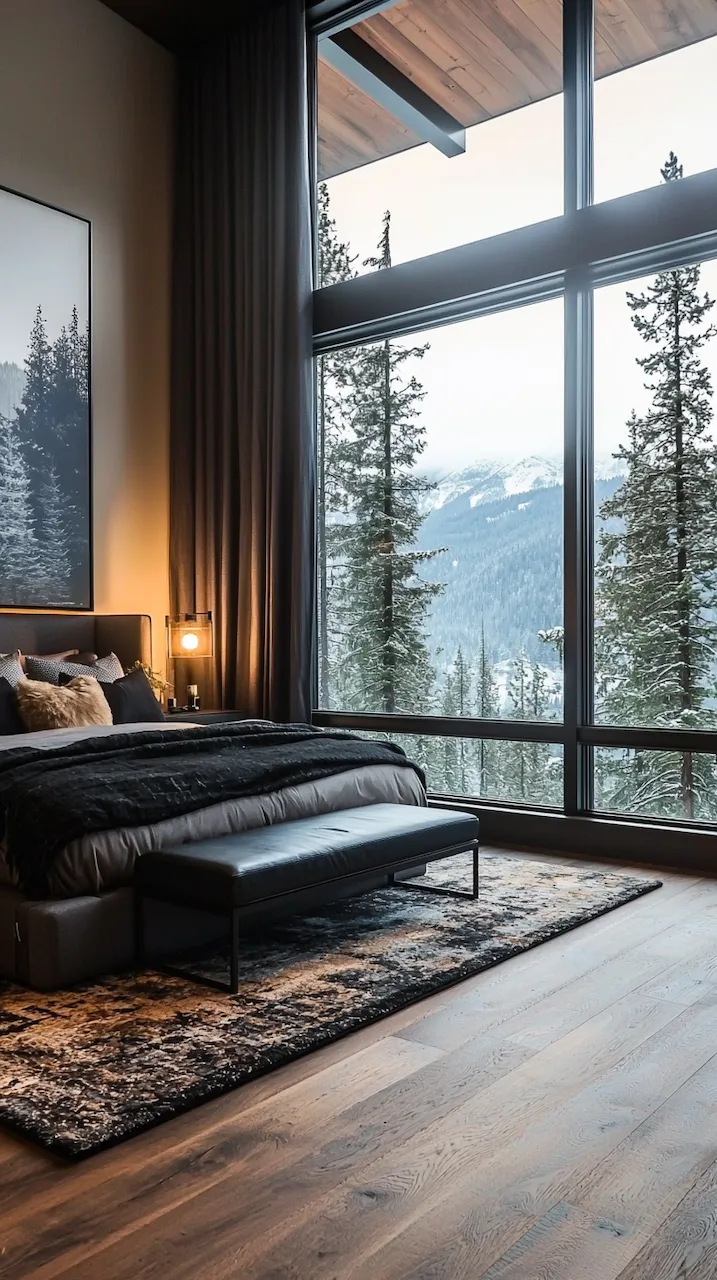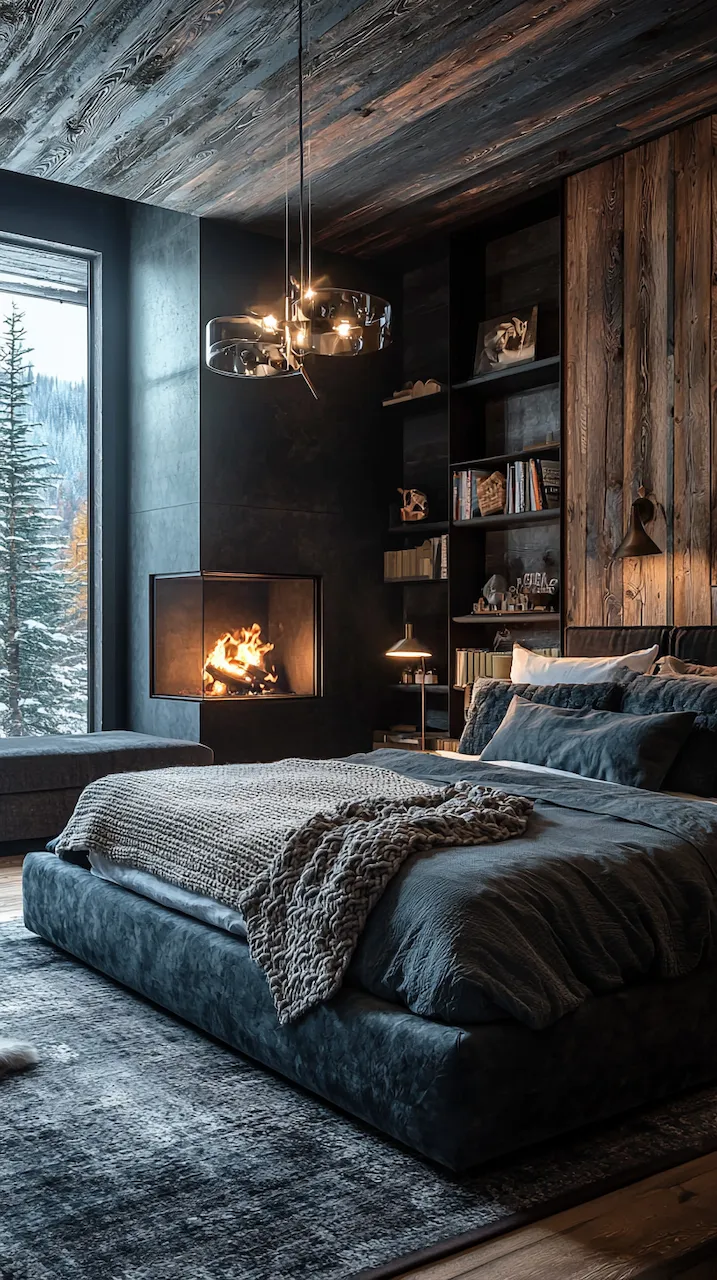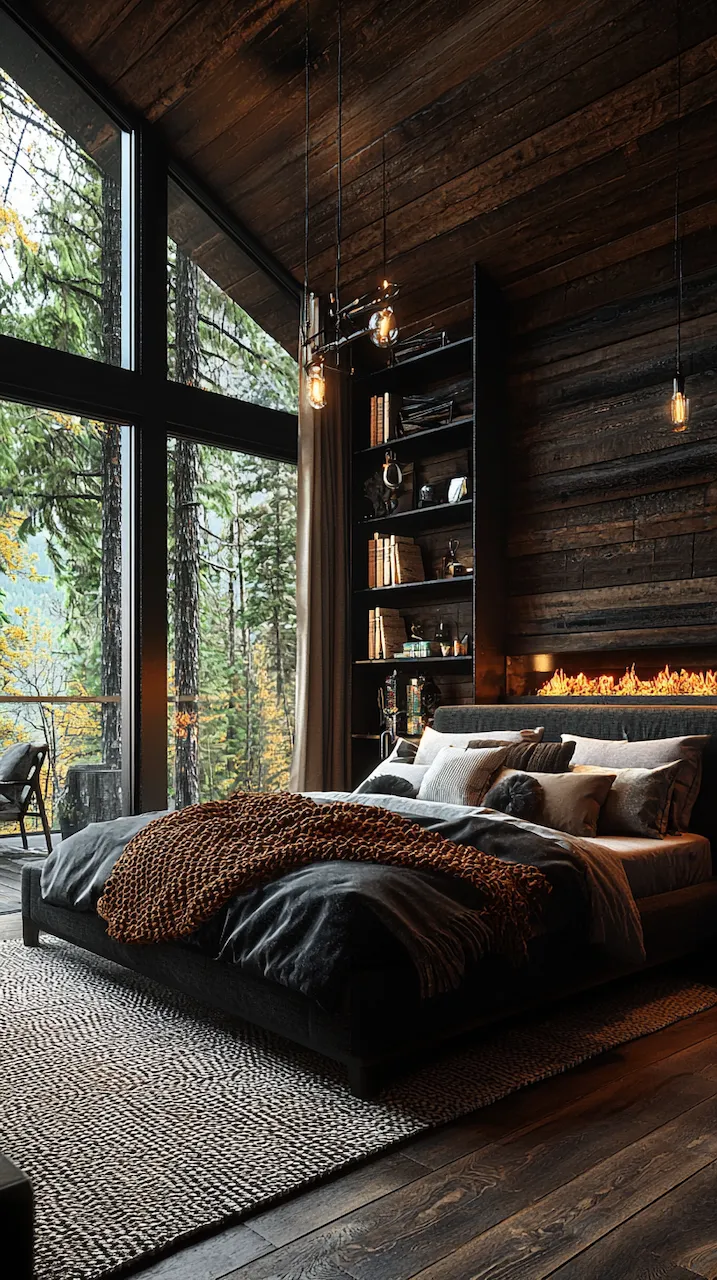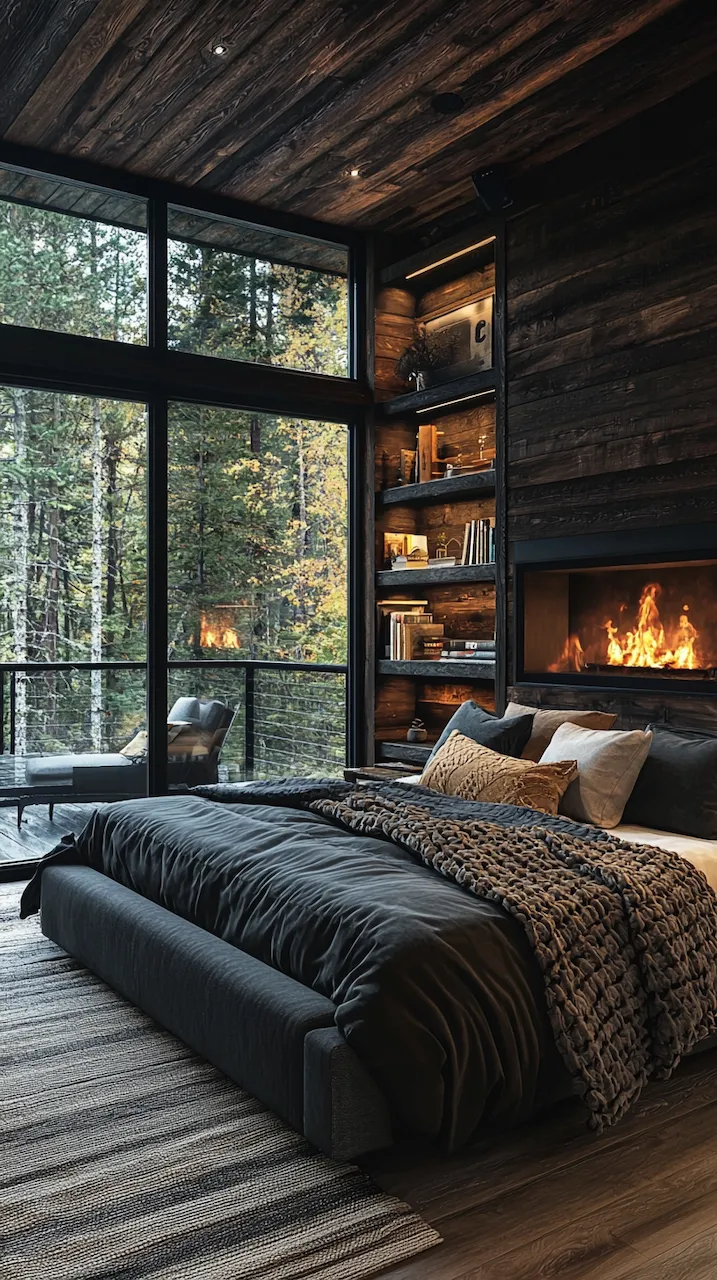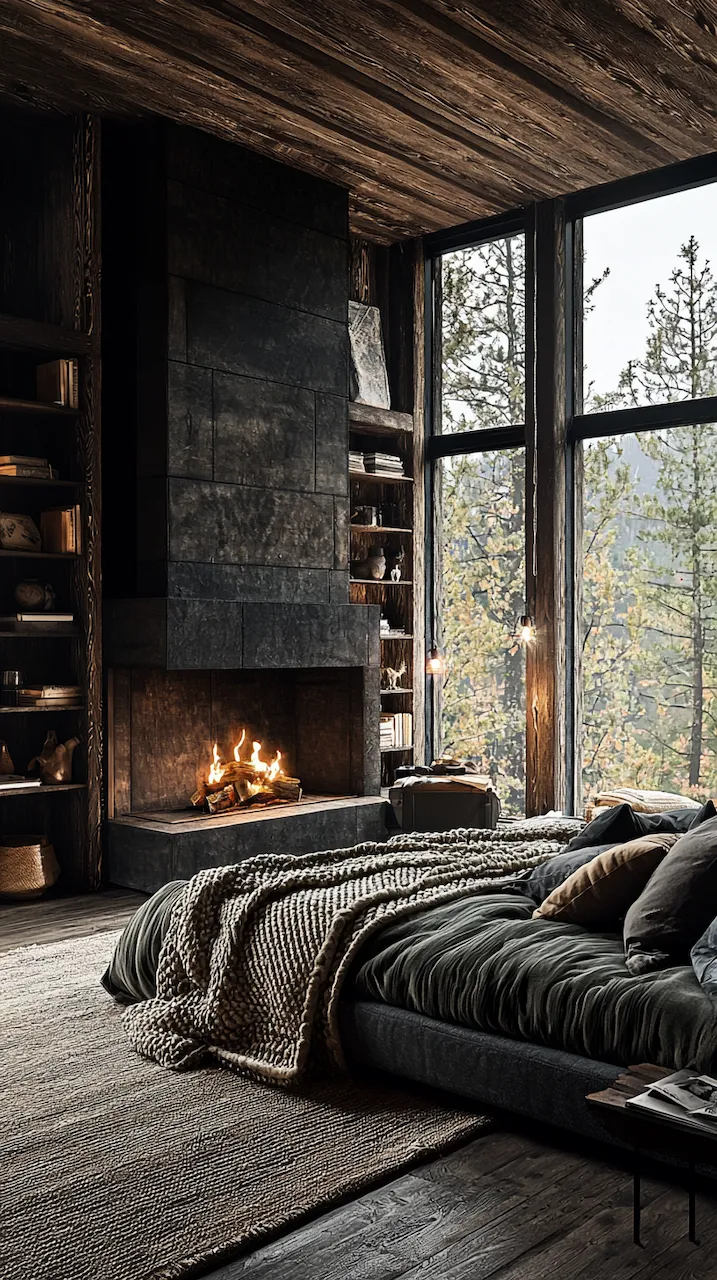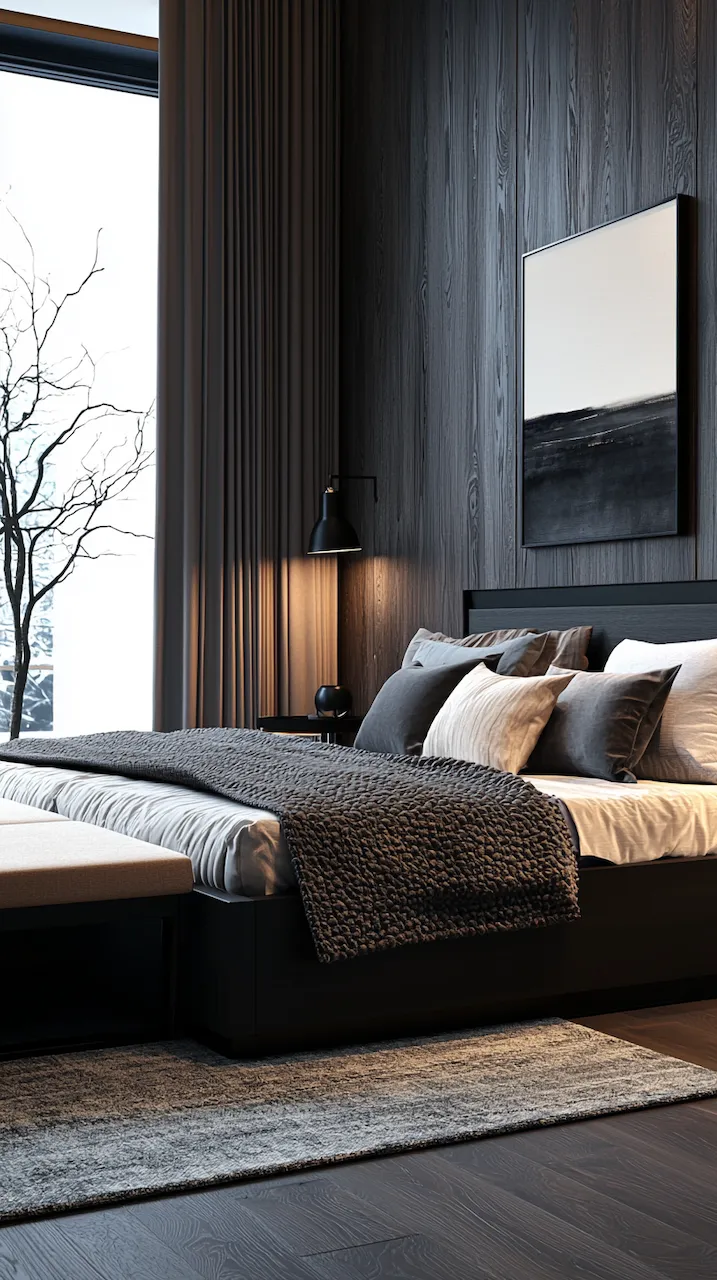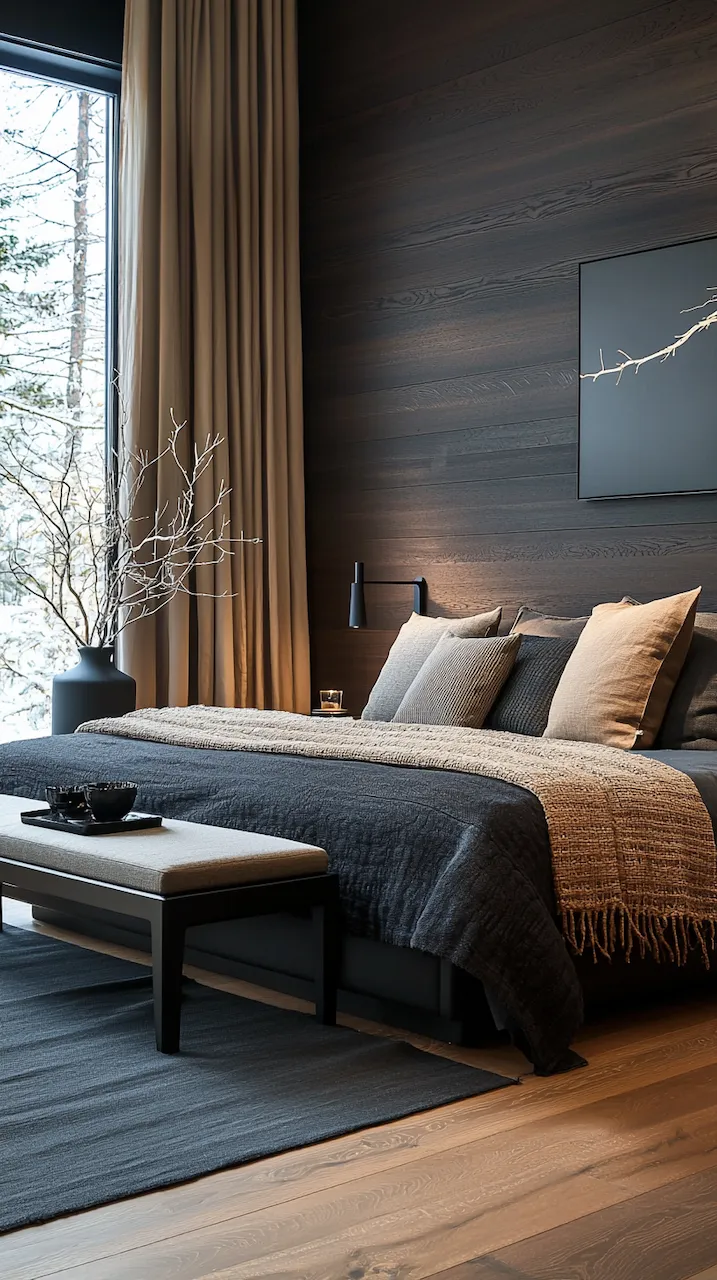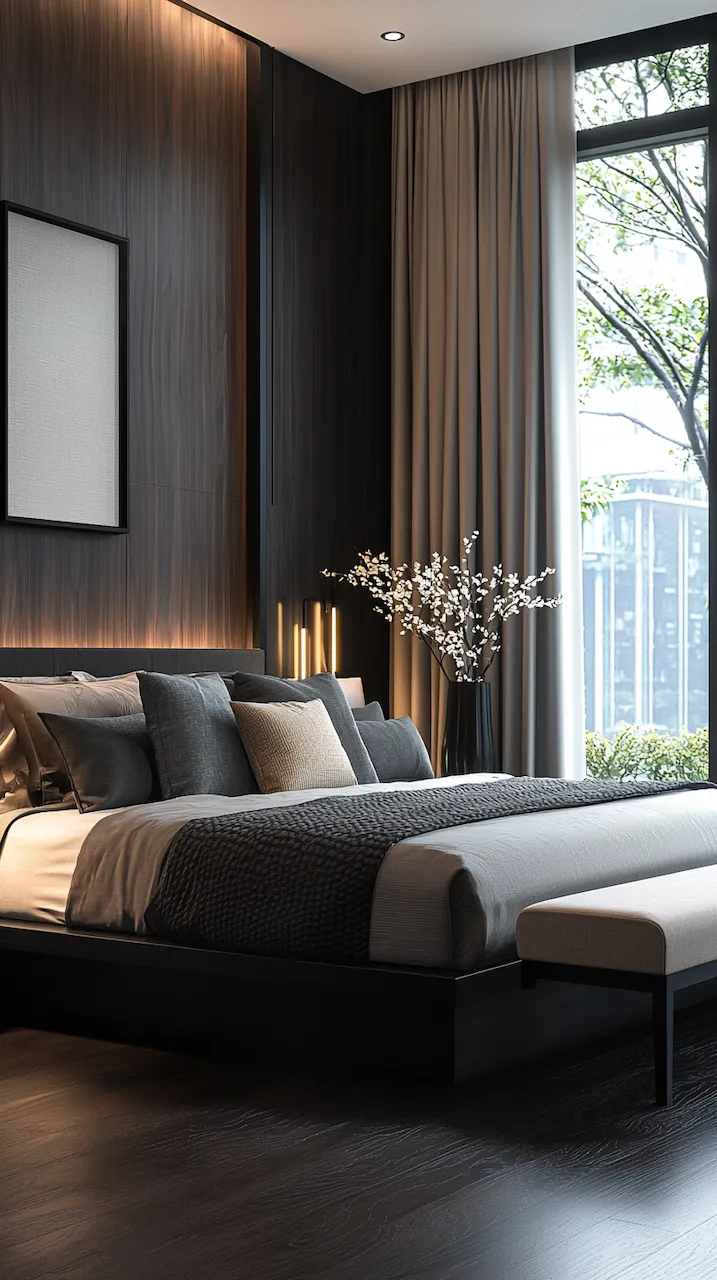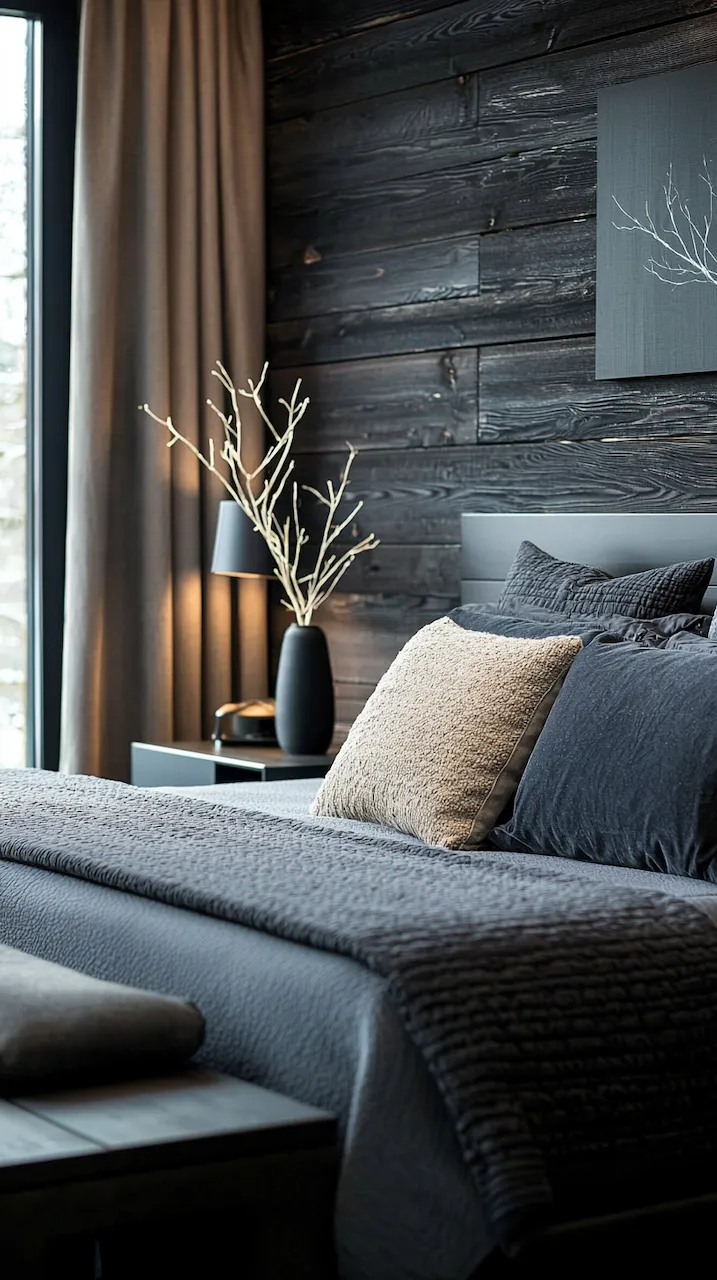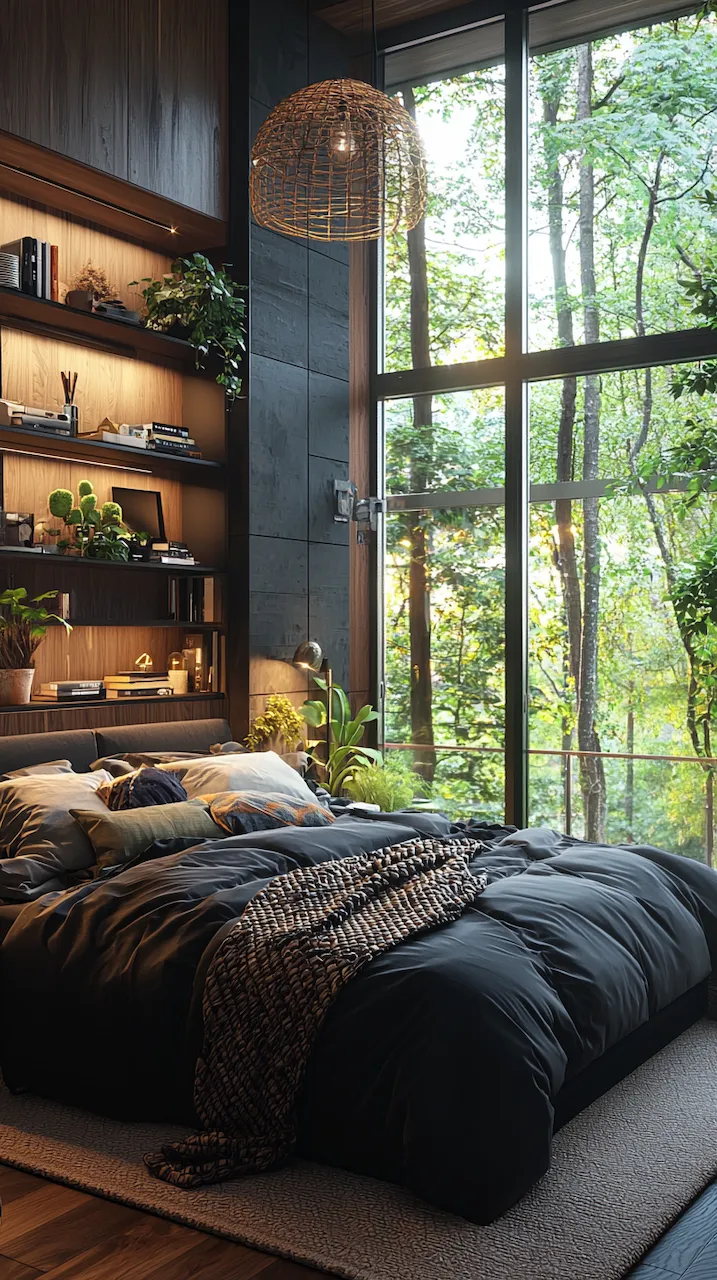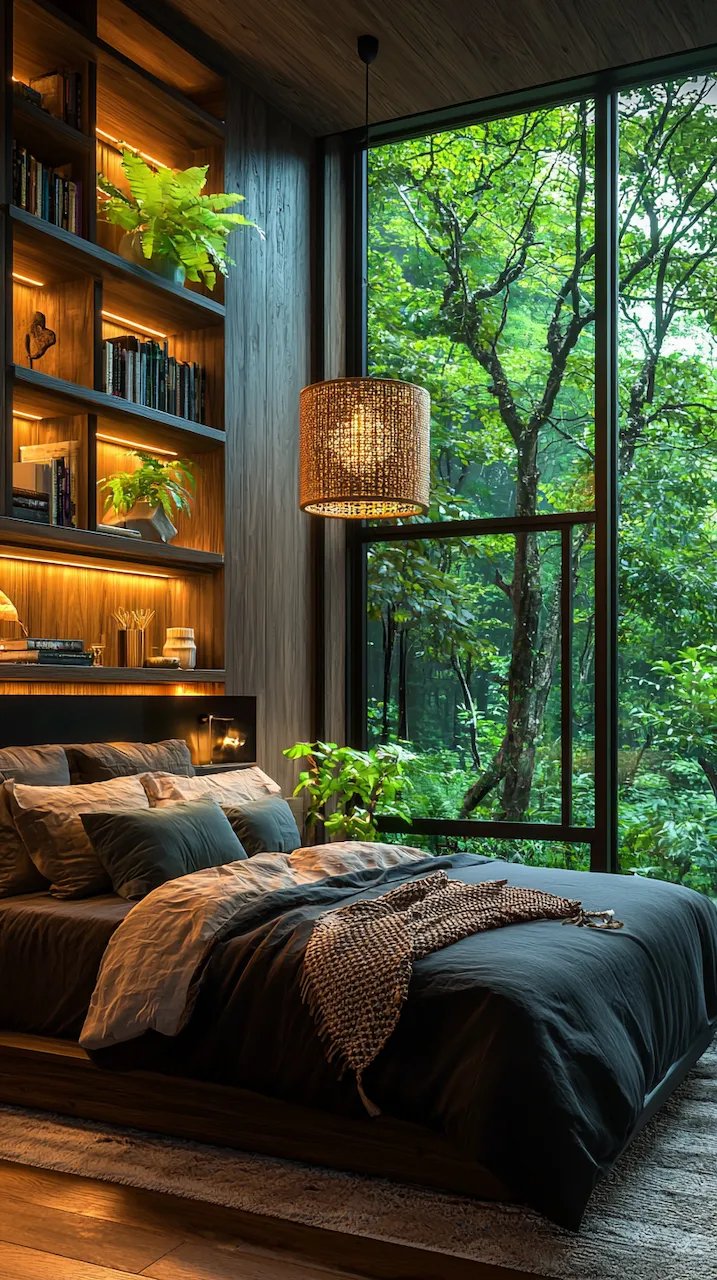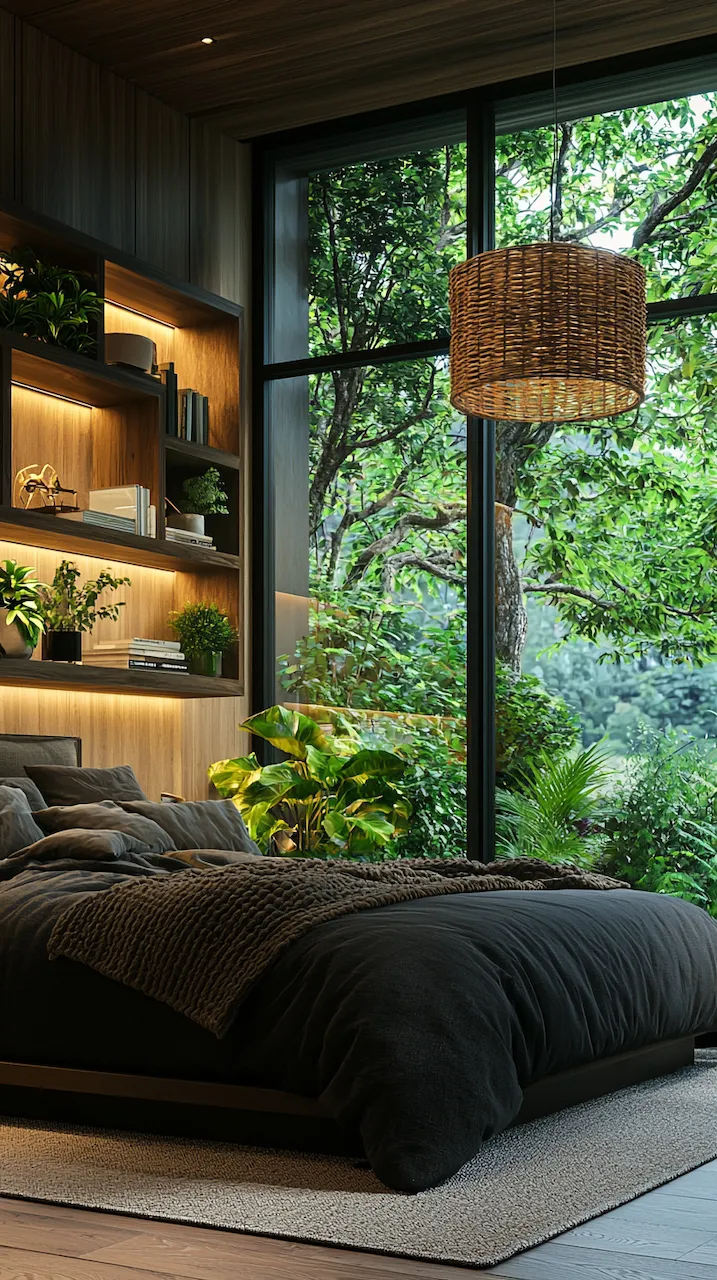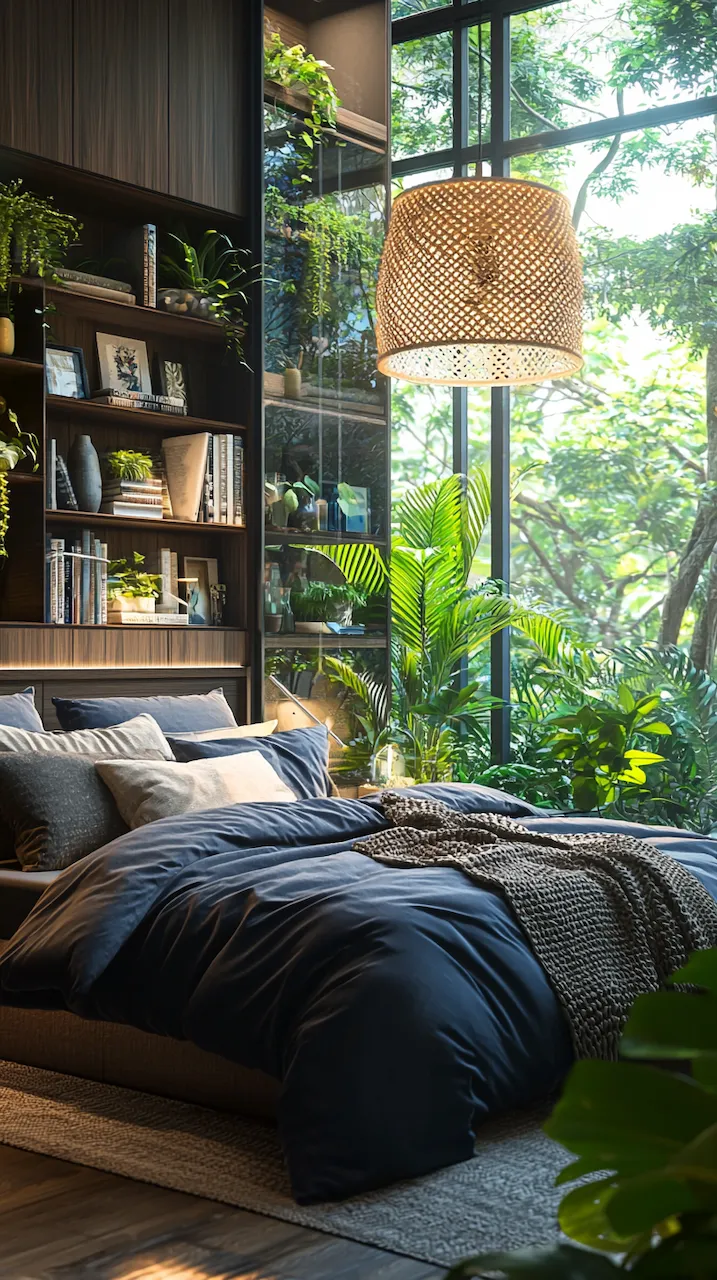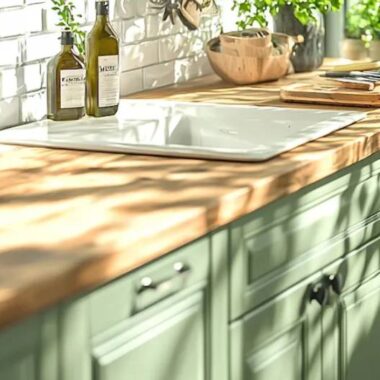In both the kitchen and the bedroom, mood is everything. The right balance of flavors, textures, lighting, and warmth can transform a routine into a ritual — whether it’s seasoning a stew to perfection or slipping into layered linens at the end of a long day. The spaces we inhabit are like the meals we prepare: an expression of taste, intention, and love.
Design, like cooking, is deeply sensory. It doesn’t just live in the eyes, but in the body — in how we feel when a room wraps around us like steam from a warm bowl of broth. A well-designed, moody bedroom can lull you into sleep with the same comfort as a favorite dish. It simmers, it whispers, it nourishes.
Imagine approaching your bedroom the way a chef approaches a dish — beginning with foundational flavors, layering textures, adding personal spices, and plating it all with intention and finesse. Let’s begin the slow, sumptuous creation of a sleep sanctuary that’s as satisfying as your grandmother’s kitchen and as bold as your favorite bistro.
Prep Your Palette: Set the Mood with Color
Start by prepping your palette, choosing colors as you would ingredients. Deep shades bring depth — like wine reduced to a syrupy glaze. Look to aubergine, clove, star anise, burnt caramel, even the smokiest shade of paprika for wall colors that calm the mind and stir the imagination. Think of navy not just as a color, but as a dark-blue broth simmering late at night. Olive green becomes the warmth of roasted vegetables on a cold evening. Maroon evokes the comfort of aged balsamic vinegar, thick and sweet.
These are not shy colors; they don’t just coat — they steep. They wrap the walls like velvet does the tongue. They quiet a space. In tiny rooms or apartments where the bedroom lives near the kitchen, these rich tones create separation not through partitions, but through feeling. They signal a shift — from flavor to slumber.
Layering Flavors: Play with Texture Like a Chef
Now begin to layer your textures, as you would seasoning in a slow-cooked dish. Start with a base — a cotton or linen duvet cover, soft and breathable like the canvas of handmade pasta. Add a velvet coverlet in a smoky plum or inky forest, smooth as chocolate mousse and just as indulgent. Introduce wool throws in chunky weaves, the texture of a rustic sourdough loaf. Don’t be afraid to mix: a slubby linen pillow next to a leather bolster, a glazed ceramic lamp beside a matte, chalky wall. Like pepper against butter, the contrast is what makes the flavors pop.
Think of woods the way you think of roasts. Natural oak is your Sunday chicken — golden, warm, and familiar. Walnut is your brisket — dark, rich, slow-burning. Incorporate wood through side tables, bedframes, shelving — even headboards that echo the look of cutting boards or butcher block counters. Then stir in metal finishes — aged brass handles that feel like the bottom of your favorite copper pot, blackened steel light fixtures like a well-seasoned skillet. There’s beauty in utility, especially when it glows softly in lamplight.
Garnish with Personality: Add Your Signature Twist
Now comes the garnish — the twist, the flourish, the thing that says “this is mine.” Just as a sprig of thyme or a sprinkle of za’atar finishes a dish, your space should wear a touch of the unexpected. Think bold, spice-colored accent pillows — turmeric, chili, saffron — tossed casually onto a storm-gray bedspread. Think a Moroccan tagine repurposed as a bedside bowl, or a repainted spice rack used to display books or scent bottles. Hang a framed menu from your favorite restaurant, or display antique whisks and ladles as sculptural elements. These choices aren’t just decorative; they’re autobiographical. They’re the handwritten notes in your design recipe.
For those living in compact spaces, where the bedroom shares territory with a studio kitchen or dining nook, efficiency is key — but it can also be stylish. Use a fold-down table near your bed as both nightstand and breakfast bar. Store linens in vintage kitchen canisters, label them playfully (“Midnight Snacks = Pillowcases”). Let a bar cart double as a beauty station or bedtime tea trolley. A curtain of dark linen can divide zones with elegance, like separating sweet from savory.
The Plating Stage: Compose Layout and Light
Finally, the plating — the arrangement, the lighting, the atmosphere. Layout is like a composed plate. A low platform bed can center the room like a serving bowl on a table. A bench at the foot of the bed becomes a charcuterie board of form and function — a place to dress, toss clothes, stack books. A corner chair in buttery leather can echo your favorite banquette, inviting you to linger before turning in.
And lighting — oh, lighting. This is your oven glow, your candles at the table, your golden hour. Use it in layers. A soft pendant overhead, like a cloche lifted from a dish. Wall sconces like the flick of salt, directional and intentional. String lights or under-bed LEDs can act like a rim of olive oil on the plate — subtle, sexy, unexpected.
When your space is finally composed, step back and savor. Does it invite rest? Does it reflect your flavor? Have you seasoned generously, but not overdone it? Like any good meal, your bedroom should balance richness with lightness, heat with calm, bold with subtle.
Final Taste Test: Savor Your Style
Let your moody bedroom be the nightcap to your day — the final course, the quiet exhale after life’s feast. Don’t be afraid to experiment. Let your intuition guide you. Trust that the elements you love in the kitchen — heat, spice, balance, care — belong in your bedroom too.
Because good design, like good food, is personal. It lingers. It comforts. It reminds you who you are — and invites you to dream of who you might become.
Bon nuit, bon goût — and sleep deliciously.
